Cheap Travel to Milan Italy: The Ultimate Budget Guide
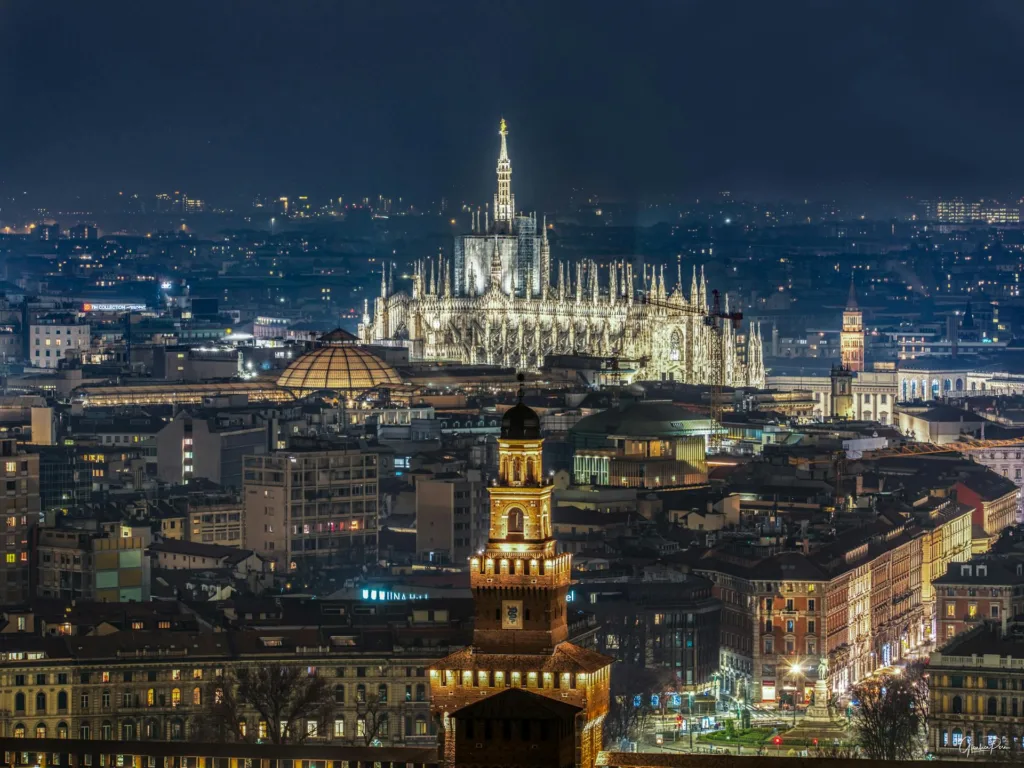
Dreaming of a trip to Milan but worried about your budget? Don’t stress—you can absolutely explore this stylish city without overspending! Whether you’re planning your first solo trip or just looking to save money, this guide is here to show you exactly how to make the most of your Milan adventure without breaking the bank.
You’ll learn how to find cheap flights, navigate Milan’s transport system like a local, and uncover the best budget-friendly eats and hidden experiences. This isn’t just another generic travel guide—it’s packed with detailed, insider advice tailored to solo travelers who like saving money while diving deep into the true essence of a destination.
So, strap in! We’re going step-by-step: from booking the cheapest flights to Milan, getting around affordably, finding budget accommodations, enjoying amazing food at local prices, and even squeezing in day trips—without overspending. Let’s make Milan work for your wallet and still give you an unforgettable trip.
How to Get to Milan: Budget Flight Tips
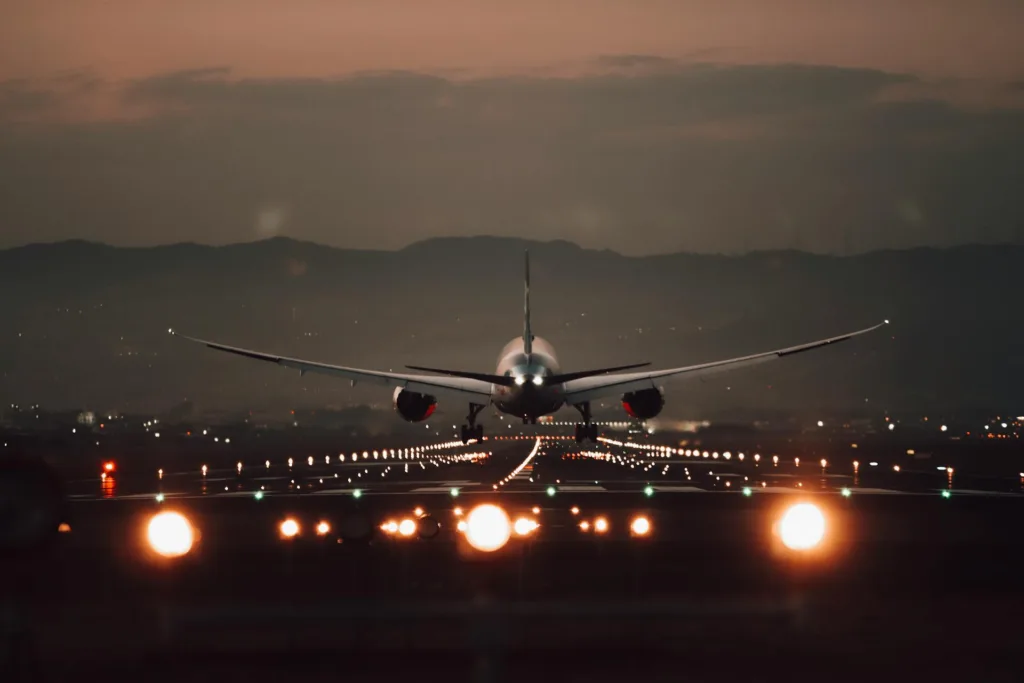
Photo by Nguyen Hung
Getting to Milan on a budget is entirely possible if you follow the right strategies and use some tried-and-tested travel hacks. Here’s an in-depth guide to help you land the best flight deals to Milan without overspending.
1. Know Your Airports: Where to Land for the Cheapest Flights
Milan is served by three main airports, each with its own benefits for budget-conscious travelers:
1.1 Bergamo-Orio al Serio Airport (BGY)
- Often the cheapest airport for budget travelers, thanks to airlines like Ryanair and Wizz Air.
- Though it’s about an hour outside Milan, shuttle buses and regional trains make it easy and affordable to get to the city.
- Best choice for solo backpackers flying within Europe on low-cost airlines.
1.2 Malpensa Airport (MXP)
- Milan’s largest and busiest airport, serving long-haul international flights.
- Great for travelers coming from outside Europe, especially if you book ahead and keep an eye on deals from major airlines.
- Offers affordable regional train connections to central Milan (details in transport section).
1.3 Linate Airport (LIN)
- The closest airport to the city, just 7 km from the center.
- Used mainly for domestic or short-haul European flights.
- Convenient but often pricier than Bergamo for low-cost options
Pro Tip: If one airport has higher fares, don’t forget to check nearby cities like Turin or Verona. Regional trains can get you to Milan for as little as €10-15 ($11-$16), making the overall cost lower.
2. Use Comparison Websites to Find Deals
Finding the cheapest flight begins with choosing the right tools. These websites and apps are your best friend:
- Google Flights: One of the most reliable options for finding and comparing fares quickly. Use the map view feature to spot cheaper destinations and routes near Milan.
- Skyscanner: Allows you to search for flights with “Everywhere” or flexible date options. Look for flights with stopovers if direct routes are pricey.
- Kayak or Momondo: Both provide detailed fare breakdowns and alerts for last-minute deals.
Insider Tip: Always search in incognito mode to avoid dynamic pricing—airlines track your searches and may increase fares after repeated visits.
3. Timing is Everything
Budget-friendly flights depend heavily on when you book and when you fly. Use these timing hacks to save big:
- Book 2-3 Months in Advance
- International flights are cheapest when booked approximately 2-3 months before departure. For short-haul European flights, 6-8 weeks in advance often yields the best prices.
- Avoid booking too early or too late as prices tend to be higher outside this optimal window.
- Fly Mid-Week
- Fare prices are often lowest on Tuesdays and Wednesdays. Avoid weekend departures whenever possible.
- Travel Off-Season
- Peak seasons like summer (June-August) and events like Milan Fashion Week (February & September) lead to price hikes. Choose shoulder months like April-May or September-October for cheaper fares and fewer crowds.
- Track Price Drops with Alerts
- Use apps like Hopper, Skyscanner, or Kayak to set fare alerts. These tools notify you when flight prices drop, ensuring you never miss a deal.
4. Choose Budget Airlines (But Be Smart)
Low-cost carriers are a lifesaver for anyone flying to Milan on a budget. Airlines like Ryanair, EasyJet, and Wizz Air frequently have deals for as low as €20-€50 ($21-$53) one way within Europe. However, budget flights come with their own rules:
- Pack Light
- Stick to carry-on luggage. Most budget airlines charge hefty fees for checked bags.
- Check the size and weight limits for hand luggage—airlines like Ryanair strictly enforce their policies.
- Skip Seat Selection
- If it’s a short flight, avoid paying extra to choose your seat. Budget airlines often charge €10-€20 ($11-$21) just for this option.
- Double-Check Airports
- Some budget carriers fly to secondary airports (like Bergamo-Orio al Serio). Make sure you plan for transport costs into Milan to determine if the savings are worth it.
- Beware of Hidden Fees
- Carefully review ticket details for add-ons like priority boarding, insurance, or even printing boarding passes. Stick to what’s essential to keep costs low.
5. Consider Alternative Routes
Flexibility with your route can lead to massive savings. Instead of flying direct into Milan, look for flights with layovers or alternative arrivals:
- Stopovers in Major European Hubs
- Check for flights into larger hubs like Paris, Munich, or Zurich and pair them with a budget airline for the final leg to Milan.
- Open-Jaw Tickets
- Fly into Milan but return from another nearby Italian city—like Veniceor Florence. This gives you flexibility to explore while saving money on flights.
- Nearby Airports
- Don’t forget smaller airports like Turin (TRN) or Verona (VRN). Regional trains from these cities to Milan cost just €10-15 ($11-$16)and can often make a round trip cheaper than flying directly.
6. Insider Hacks for Milan Flights
Here are a few lesser-known tips to take your flight searching to the next level:
- Sign Up for Airline Newsletters
- Many budget airlines send exclusive promo codes or discounts to subscribers. It’s free and occasionally leads to huge savings.
- Use Travel Credit Cards
- If you’re a frequent traveler, consider using credit cards that offer points or miles. These can often be redeemed for free or discounted flights.
- Shop Currency Conversions Wisely
- Some airlines display fares in multiple currencies. Use local currency (Euros, for Milan) to avoid additional fees or unfavorable conversion rates.
Getting to Milan doesn’t have to cost a fortune. With these tips, you’ll not only find a flight that fits your budget but also start your adventure with plenty of euros to spend when you arrive!
Best Budget Airlines to Milan
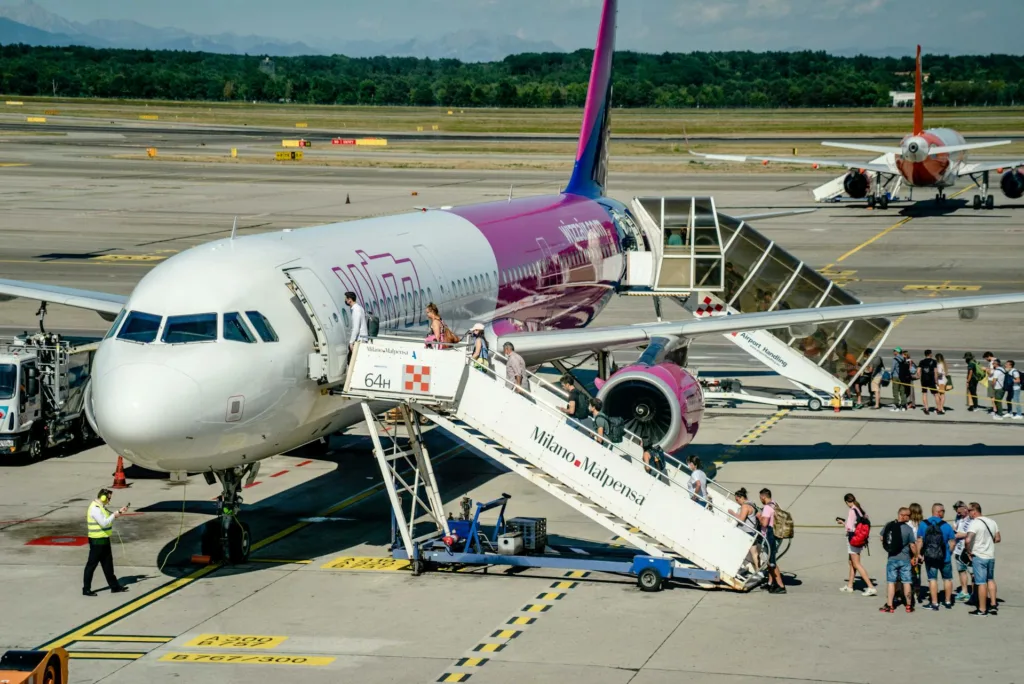
Photo by Alex P
These airlines are ideal for low-cost fares on short-haul flights within Europe or nearby regions.
1. Ryanair
- Why Choose Ryanair?
- One of Europe’s largest and cheapest airlines, Ryanair frequently offers flights to Milan’s Bergamo-Orio al Serio Airport (BGY) for as low as €10-€30 ($11-$32) during promotions.
- Routes: Operates flights from nearly every major city in Europe—London, Berlin, Barcelona, Paris, Dublin, and more.
- Pro Tip: Look out for Ryanair’s seat sales during off-peak times. These run seasonally with tickets as low as €5 ($5.30)!
2. EasyJet
- Why Choose EasyJet?
- A solid option for budget-conscious travelers, EasyJet flies frequently to Milan Malpensa (MXP) and sometimes Linate (LIN) at competitive prices.
- Routes: Connects Milan with popular European cities like London, Geneva, Amsterdam, and Madrid.
- Pro Tip: Book directly on EasyJet’s website and avoid third-party booking sites to maximize savings on any optional add-ons.
3. Wizz Air
- Why Choose Wizz Air?
- Affordable no-frills carrier, perfect for solo travelers flying from Central or Eastern Europe. Commonly services Milan Bergamo-Orio al Serio (BGY).
- Routes: Operates flights from cities like Budapest, Warsaw, Prague, Sofia, and Bucharest.
- Pro Tip: Become a Wizz Discount Club member (annual fee €30/$32) for exclusive deals and early-bird access to sales.
Best Long-Haul Airlines Flying to Milan
If you’re coming from outside Europe, these airlines offer affordable long-haul options to Milan Malpensa (MXP).
1. Aer Lingus
- Why Choose Aer Lingus?
- Known for its competitive fares, especially from North America to Europe with affordable connections to Milan.
- Routes: Common origins include New York (JFK), Chicago (ORD), and Boston (BOS). Most flights connect via Dublin.
- Pro Tip: Book a multi-city ticket to explore Dublin on a layover without extra cost.
2. TAP Air Portugal
- Why Choose TAP?
- Great for accessing Milan from North America or South America with a layover in Lisbon or Porto. Often offers stopover programs to explore Portugal for free.
- Routes: Flies from cities like Miami, New York, and São Paulo.
- Pro Tip: Sign up for TAP’s newsletter for deals and promotions—including discounts on connections to multiple European cities.
3. Emirates or Qatar Airways
- Why Choose Emirates/Qatar?
- While premium, these airlines frequently offer competitive fares for Milan-bound flights from Asia, Africa, and the Middle East.
- Routes: Connects cities like Dubai, Doha, Bangkok, Kuala Lumpur, and Cape Town to Milan.
- Pro Tip: Check for discounted multi-city trips, allowing you to explore a stopover destination (e.g., Dubai or Doha) en route.
Regional Airlines Offering Deals
If you’re based in Europe or a nearby country, these airlines often serve Milan with both budget and full-service options:
- Air Europa: Affordable flights between Spain (Madrid or Barcelona) and Milan.
- Vueling: Great prices for travelers from Spain and France into Milan Malpensa (MXP) or Linate (LIN).
- LOT Polish Airlines: Good value for Central European travelers with flights to Milan from Warsaw or Krakow.
- Alitalia/ITA Airways: Milan’s native carrier, offering higher comfort and often running promotions for domestic Italian routes or short-haul flights within Europe.
Exclusive Tips for Booking Budget Airline Flights
- Avoid Peak Seasons on All Airlines: Whether you’re flying Ryanair or Emirates, flights during Milan Fashion Week (February/September) or holiday periods will always be pricier.
- Sign Up for Airline Newsletters: Budget airlines like Ryanair, EasyJet, and Wizz Air regularly send out alerts for flash sales and discounts.
- Use Bundled Promo Codes: Websites like Kiwi.com occasionally bundle budget flights across multiple carriers for cheaper fares.
- Leverage Round-Trip Discounts: Many airlines (even low-cost carriers) offer discounts if you book round-trip tickets instead of one-way. Compare costs to decide.
- The “Mid-Month, Mid-Week” Rule: Fly mid-week (Tuesdays and Wednesdays) and aim for mid-month departures for the lowest fares across carriers.
Flight Routes to Milan: Best Choices for Budget Travelers
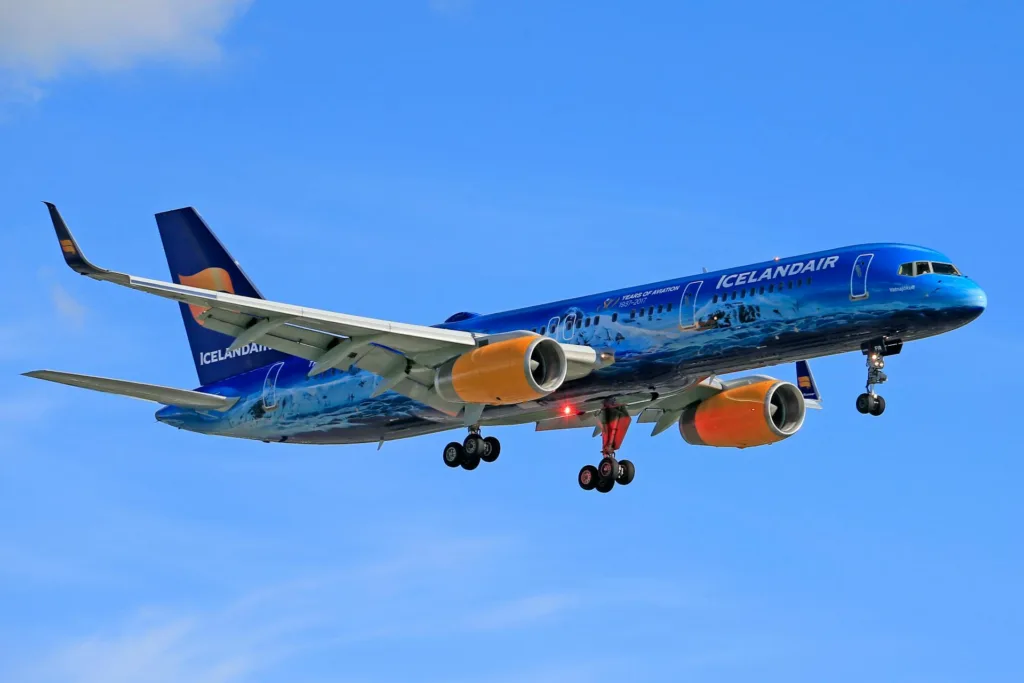
Photo by Jeffry S.S.
Choosing the right flight route can dramatically reduce costs, especially if you’re flexible and plan strategically. Here’s how to navigate options based on your origin:
1. Direct Flights vs. Connecting Flights
- Direct Flights:
While convenient, direct flights to Milan (especially from long-haul destinations like the US, Canada, or Asia) often come at a premium. If you’re dead-set on flying direct, book during the low travel season (spring or fall) for the best deals. - Connecting Flights:
- Very often (especially for solo travelers), connecting flights are significantly cheaper than flying direct to Milan.
- Example: Flying to London or Paris and then booking a budget airline (like Ryanair or EasyJet) to Milan can save you 30-50%.
- Look out for flights with hubs in Iceland (Keflavik), Lisbon, or Barcelona—these often serve budget-friendly onward flights to Milan.
Insider Tip: Use multi-city searches on Google Flights or Skyscanner (inputting a city near Milan like Bergamo, Verona, or Turin) to uncover cheaper options than flying directly into Milan.
2. Regions and Their Best Flight Deals
Here’s how to approach flights to Milan based on your general location:
- From North America (US and Canada):
- Cheapest Routes:
Look for flights connecting through Iceland (via Icelandair), Dublin(Aer Lingus), or Portugal (TAP Air Portugal). These often provide the lowest long-haul fares at $400-$600 round-trip. - Budget Airlines for Europe Leg: Icelandair or Aer Lingus can get you to main European hubs, where budget airlines (like Wizz Air or Ryanair) offer Milan flights from as low as $20-$30 one-way.
- Pro Tip: Be flexible with US departure cities. Places like New York, Boston, or Miami tend to have cheaper flights to Milan than smaller cities.
- Cheapest Routes:
- From Europe:
- Cheapest Routes:
Low-cost giants Ryanair and EasyJet dominate flights to Milan, operating from cities like London, Barcelona, Rome, and Berlin with fares as cheap as €10 ($11) one-way during sales. - Pro Tip: Use the “Everywhere” feature in Skyscanner to compare flights not just to Milan but even nearby hubs like Verona or Turin. Trains or buses can get you to Milan for minimal costs.
- Cheapest Routes:
- From Asia (India, Southeast Asia, East Asia):
- Cheapest Routes:
Emirates, Qatar Airways, and Turkish Airlines often provide the best deals with free stopovers in Dubai, Doha, or Istanbul (use this as a mini vacation!). Fares hover around $500-$800 round-trip. - For budget connections, look for stops in Singapore, where low-cost airlines (like Scoot or AirAsia) can link you with Europe at a lower cost.
- Pro Tip: Compare layover cities on Google Flights Explore to find hidden route savings—for example, flying Bangkok → Istanbul → Milan can be cheaper than direct flights.
- Cheapest Routes:
- From Africa or the Middle East:
- EgyptAir and Qatar Airways typically offer the cheapest routes into Milan Malpensa (MXP), especially from North and East Africa.
Stopover Hacks: Turning Layovers into Savings
A well-planned stopover not only saves money but also lets you explore a new city for free or nearly free! Here’s how to maximize your layovers en route to Milan:
1. Stopover-Friendly Airlines
Certain airlines offer inexpensive (or free) layover options in exotic cities. Here’s a breakdown:
- Icelandair: Stop in Reykjavik for up to 7 days at no extra cost when flying from North America to Milan.
- TAP Air Portugal: Add a 1-5 day stopover in Lisbon or Porto at no additional airfare charge.
- Turkish Airlines: Free city tours or discounted accommodation options in Istanbul if your layover exceeds 6 hours.
2. How to Plan a Stopover
- Book multi-city routes directly on the airline’s website to select layover-friendly flights.
- Check if the stopover includes perks like free transit visas or reduced hotel rates (e.g., airlines like Qatar and Emirates).
3. Layover Pro-Tips
- Always factor in layover city costs (food, transport) to see if the savings are worth it.
- Use this hack for quick cash savings: schedule long daytime layovers vs. overnight ones (reduces accommodation costs).
Timing Strategies: When and How to Book
The timing of your booking determines whether you snag a budget-friendly seat or overpay. Here’s a complete breakdown:
1. The Perfect Booking Window
- Domestic Flights: 1-2 months before departure.
- Short-Haul International Flights (Europe to Milan): 2-3 months in advance.
- Long-Haul Flights (US/Asia/Africa to Milan): 4-6 months ahead for the best deals.
2. Seasonal Considerations
- Avoid Peak Travel Seasons: High prices hit during Milan Fashion Weeks (February & September), the summer holidays (June-August), and Easter breaks.
- Travel Shoulder Seasons (Cheapest Periods):
- April–May: Mild weather and lower costs.
- September–October: Fewer tourists and off-season deals.
3. Best Days to Fly
- Tuesday, Wednesday, and Saturday often have the lowest fares.
- Fly early morning or late night to avoid high demand (and pricing).
4. Use Fare-Watching Tools
- Google Flights Alerts: Track price changes for specific dates and routes.
- Hopper App: Predicts the best time to buy based on historical data.
- Skyscanner Alerts: Tracks multiple routes and lets you compare flexible date fares.
5. Adjust Your Search Technique
- Use VPNs to search fares anonymously or in a different country’s currency to find cheaper rates.
- Experiment with one-way tickets: Sometimes booking two one-way flights (e.g., one via Ryanair + one via EasyJet) is cheaper than a round trip.
Arriving in Milan on a Budget
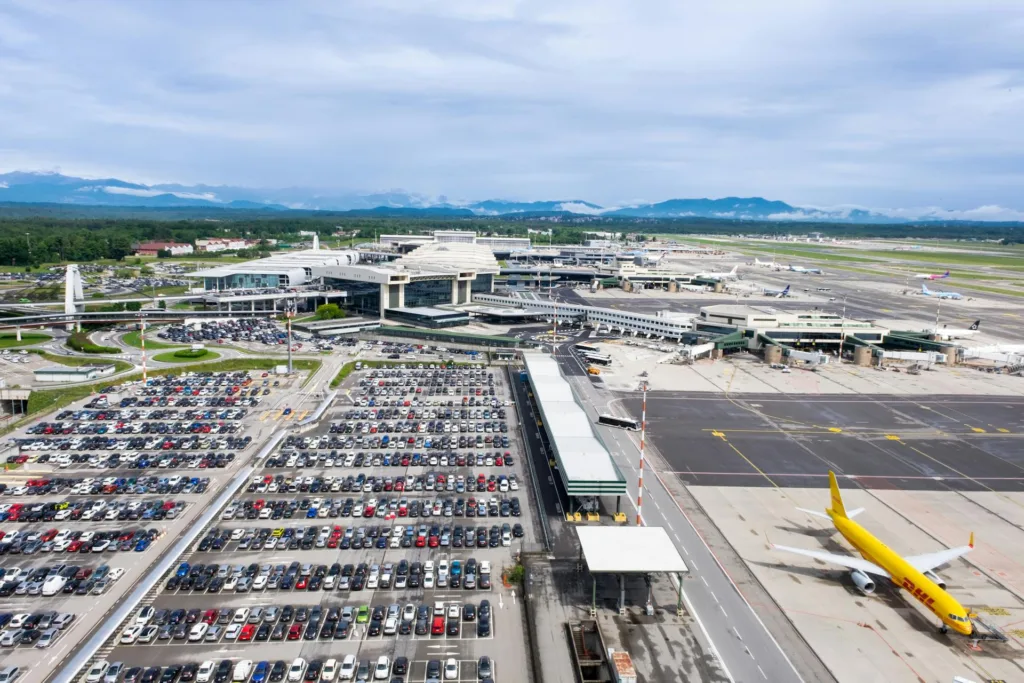
Photo by Sergio Scandroglio
Congratulations! You’ve landed in Milan without draining your wallet on flights—now it’s time to make your way into the city without overspending. Milan has three main airports: Bergamo-Orio al Serio (BGY), Malpensa (MXP), and Linate (LIN), and all of them offer budget-friendly options for solo travelers to reach the city center.
1. From Bergamo-Orio al Serio Airport (BGY)
If you flew Ryanair or Wizz Air, chances are you’ve landed at Bergamo, Milan’s favorite low-cost hub. Although it’s about an hour from the city, getting to Milan Centrale station is straightforward and cheap.
Cheapest Transport Options:
- Shuttle Buses:
- Companies: Terravision, Orioshuttle, Flixbus.
- Cost: €5-€10 ($5.30-$11) one-way.
- Duration: 50-60 minutes to Milan Centrale (central station).
- Where to Find: Bus pick-up points are right outside the arrivals terminal, and tickets can be booked online or at the airport kiosk.
- Pro Tip: Pre-book your ticket online to save a couple of euros. Some services offer discounts for round-trip bookings.
- Regional Trains:
- Route: Bus from Bergamo Airport to Bergamo Train Station (€2-€3/$2.10-$3.20) → Train to Milan Centrale (€5/$5.30).
- Cost: Total €7-€8 ($7.40-$8.50).
- Duration: Around 75 minutes.
- Why Choose This? More scenic and cost-efficient, especially if you’re traveling light.
Key Insider Tips:
- Shuttle buses run frequently (every 20-30 minutes), making them a practical option even for late arrivals.
- Avoid taxis unless absolutely necessary—they can cost upwards of €90 ($95) to the city center.
- Need a snack? Stop by the airport’s convenience stores before taking the bus—they’re cheaper than buying food in the city at night.
2. From Malpensa Airport (MXP)
Malpensa, Milan’s largest international airport, is about 50 km (31 miles) from the city center. Despite the distance, multiple affordable options are available to get into Milan.
Cheapest Transport Options:
- Malpensa Express Train:
- Cost: €13 ($14) one way.
- Duration: 50 minutes to either Milan Centrale or Cadorna train stations.
- Where to Find: The train departs directly from both Terminal 1 and Terminal 2.
- Pro Tip: Booking a round-trip ticket online or through the Trenord app often gives you discounts (about 10%).
- Shuttle Buses:
- Companies: Terravision, Autostradale, Malpensa Shuttle.
- Cost: €10 ($11) one-way, €16 ($17) round-trip.
- Duration: 50-60 minutes to Milan Centrale.
- Why Choose This? Best for budget travelers who don’t mind slightly longer travel times.
- Taxis:
- Cost: Fixed rate of €90 ($95) to central Milan.
- When to Use: Only opt for a taxi if you’re traveling late at night or have a large amount of luggage.
Key Insider Tips:
- If you’re staying in southern Milan or near Navigli, use the Malpensa Express to Milan Cadorna—it’s often quicker and closer than Centrale.
- Early trains (as early as 5:30 AM) and late buses (until midnight) cover most arrival schedules. If you land at odd hours, plan for an overnight stay at the airport.
3. From Linate Airport (LIN)
Located just 7 km (4 miles) from Milan’s city center, Linate is super-convenient and affordable for getting into the heart of the city.
Cheapest Transport Options:
- ATM Bus (Line 73):
- Cost: €2 ($2.10) one way.
- Route: Connects Linate to San Babila Metro Station (Milan’s red line).
- Duration: 30-40 minutes.
- Pro Tip: If your accommodation is further from San Babila, transfer to the metro from there (a single €2 ticket includes the bus and metro ride if used within 90 minutes).
- Shuttle Buses:
- Companies: Air Bus or Terravision.
- Cost: Around €5 ($5.30).
- Duration: 25-30 minutes to Milan Centrale.
- Best For: Travelers heading straight to accommodations near the central station.
- Taxis:
- Cost: Approximately €20 ($21) to the city center.
- When to Use: Only recommended if you’re sharing the ride or carrying heavy bags.
Key Insider Tips:
- Linate is walkable and efficient. If you’re a light packer, the affordable ATM buses are more than enough.
- For late flights, shuttle services to Centrale Station run until midnight.
4. How to Save Even More on Airport Transfers
Here are insider hacks to optimize your airport transfer budget:
- Round-Trip Discount Passes:
Many shuttle bus services (like Terravision or Orioshuttle) offer discounts for round-trip bookings. If you know your return date, book both trips at once. - Group Discounts or Shared Rides:
Traveling solo doesn’t mean you can’t save with group discounts! Check for shared-ride services like BlaBlaCar if shuttle timing doesn’t suit you. - Travel Apps:
Download ATM Milano or Moovit before you arrive. These will help you track live bus or shuttle schedules and suggest the cheapest routes. - Validate Tickets:
Always validate your paper ticket at the yellow validation machines before boarding trains or buses. Fines for unvalidated tickets can go as high as €60+ ($64)!
Getting into Milan doesn’t have to cost a fortune. Whichever airport you land at, there’s always a wallet-friendly way to reach the heart of the city! With just €5-€15, you’ll be standing in Milan’s bustling streets, ready to explore.
Which Milan Airport is Best for Solo Budget Travelers?
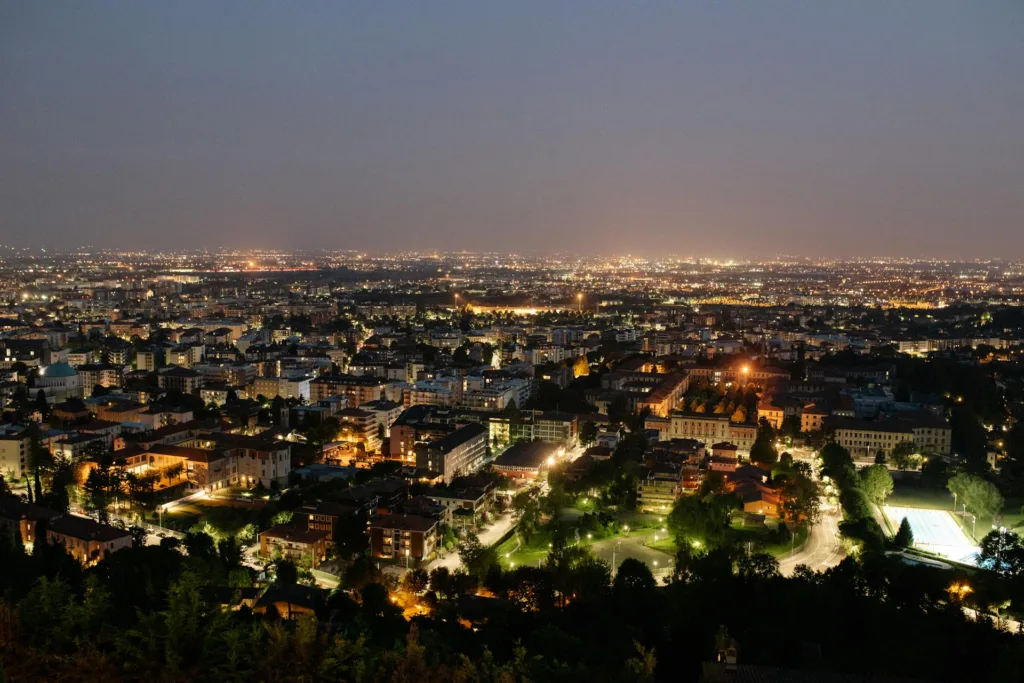
Photo by Yan Krukau
Each airport serving Milan has its pros and cons, depending on your priorities—be it cost, convenience, or proximity. Here’s a detailed breakdown to help you choose the best airport for your Milan trip as a budget-conscious solo traveler.
1. Bergamo Orio al Serio Airport (BGY)
Ideal for: Travelers flying on a tight budget, especially within Europe.
- Why Choose Bergamo?
- Home to budget airlines like Ryanair and Wizz Air, it’s by far the cheapest airport for flights into Milan.
- Regular shuttle buses and regional trains make it affordable to get to the city despite being further out.
- Best choice if you’re flying in from popular European destinations like London, Berlin, or Barcelona at unbeatable fares (often as low as €10-€30).
- Distance from Milan: About 50 km (31 miles), approximately 1-hour travel time by shuttle or train.
- Pros:
- Cheapest flights, thanks to budget carriers.
- Frequent and affordable shuttles starting at just €5 ($5.30).
- Compact airport, meaning fewer crowds and faster transit through security and arrivals.
- Cons:
- It’s the furthest airport from central Milan.
- May require transferring modes of transport (e.g., shuttle + train) if traveling late at night.
Verdict: If saving money on flights is your top priority and you don’t mind a slightly longer commute, Bergamo is perfect for solo budget travelers.
2. Milan Malpensa Airport (MXP)
Ideal for: Solo travelers arriving on long-haul international flights or those who want a balance of affordability and convenience.
- Why Choose Malpensa?
- As Milan’s largest and busiest airport, Malpensa serves a mix of international and regional carriers.
- Budget airlines such as EasyJet and mid-tier options like Aer Lingus frequently operate here, making it a solid pick for cost-conscious globetrotters flying from outside Europe.
- Distance from Milan: Around 50 km (31 miles), with easy transport options like the Malpensa Express Train or shuttles.
- Pros:
- Direct train connection (Malpensa Express), offering convenience and comfort for €13 ($14).
- Larger variety of international routes, perfect for travelers flying in from North America, the Middle East, or Asia.
- More amenities, such as lounges and budget-friendly eateries, compared to Bergamo.
- Cons:
- Flights tend to be pricier than Bergamo for intra-European routes.
- Taxis and private transfers can be expensive compared to budget transport options.
Verdict: For travelers arriving from overseas or those looking for smoother access to the city, Malpensa offers the best combination of affordability and ease.
3. Milan Linate Airport (LIN)
Ideal for: Travelers prioritizing convenience and proximity to the city center, especially for short-haul European or domestic flights.
- Why Choose Linate?
- Located just 7 km (4 miles) from the city, Linate is incredibly close and well-linked by Milan’s public transport system.
- Perfect for domestic and short-haul European flights operated by carriers like ITA Airways and occasionally EasyJet.
- Distance from Milan: Just 25-30 minutes by ATM Bus 73 or shuttle buses (both budget-friendly options).
- Pros:
- Closest airport to Milan city center.
- Public bus (Line 73) costs just €2 ($2.10) to reach downtown—making it the most affordable for airport-to-city transport.
- Small, easy-to-navigate airport with fewer passengers.
- Cons:
- Limited international options compared to Malpensa.
- Fewer budget airline routes—flights here are often more expensive unless you book domestic or heavily discounted short-haul fares.
Verdict: For those flying domestically within Italy or from nearby European countries, Linate wins for its convenience and cheap transport links.
Final Verdict: What’s the Overall Best Airport for Budget Solo Travelers?
- Bergamo-Orio al Serio (BGY) is the best overall pick if you’re chasing the cheapest flight deal—perfect for budget-conscious solo travelers with flexible schedules.
- However, Malpensa (MXP) is a great runner-up, especially if you’re arriving internationally or prefer better airport facilities and direct trains to the city center.
- Linate (LIN), though pricier for flights, is unbeatable for its convenience—ideal for domestic or lightning-fast arrival into Milan.
Getting Around Milan for Solo Travelers on a Budget
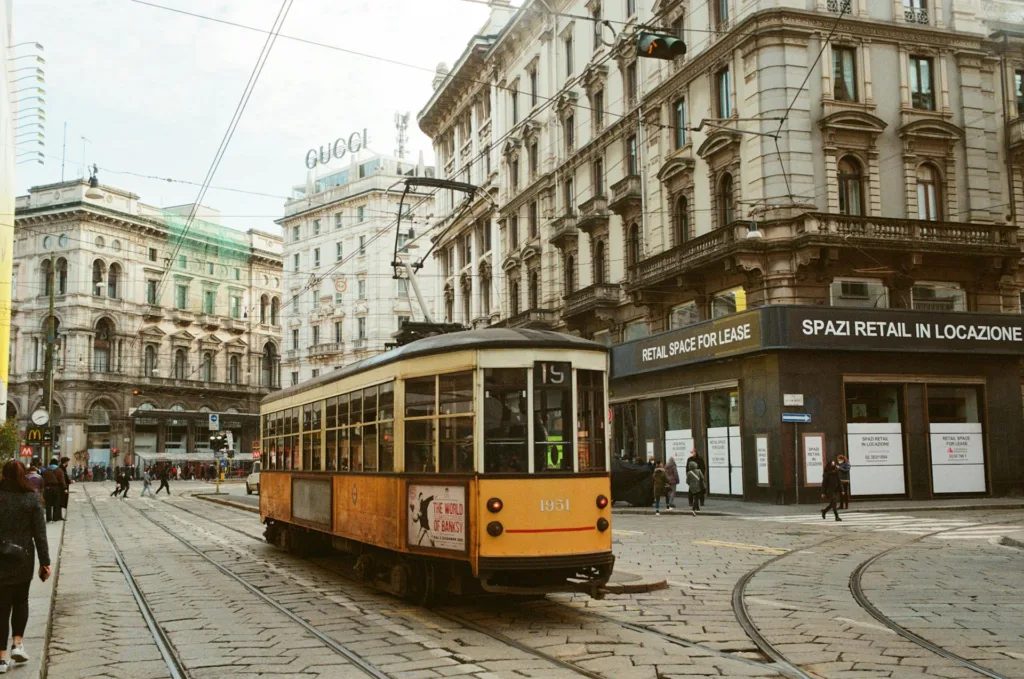
Photo by Maria Borisenko
Milan is a city where you can explore on a budget without sacrificing comfort or convenience. With its compact layout, excellent public transportation system, bike-sharing programs, and walkable neighborhoods, you won’t need to splurge to get around. Here’s an insider’s guide tailored for solo travelers to navigate Milan without overspending.
1. Public Transport: Your Budget-Friendly Backbone
Milan’s public transport system is one of the most cost-effective ways to get around. It’s operated by ATM Milano and includes the metro, buses, trams, and even trolleybuses. As a solo traveler, this is your lifeline for budget exploration.
- Metro (Subway):
- Milan’s metro consists of 4 main lines (M1, M2, M3, M5) covering all major attractions and neighborhoods, like the Duomo, Navigli, and Sforza Castle.
- Ticket Prices:
- Single ride (valid for 90 minutes): €2 ($2.10).
- 24-hour pass: €7 ($7.40).
- 3-day pass: €12 ($12.70).
- Best for: Solo travelers covering multiple attractions in a single day.
- Trams:
- A scenic and nostalgic way to see Milan, especially on the iconic vintage trams (like Tram 1).
- Cost: Included in any metro or day pass.
- Best for: Exploring historic neighborhoods like Brera or Navigli with charm.
- Buses and Trolleybuses:
- A good option for off-the-beaten-path routes or late-night travel (beyond metro hours).
- Pro Tip: Certain buses run overnight, especially on Fridays and Saturdays.
Insider Tips for Public Transport:
- Validate Your Tickets:
Always validate your tickets at yellow machines before boarding. Inspectors in Milan are strict, and fines can reach €60-€200 ($64-$215) for unvalidated tickets. - ATM Milano App:
Download the ATM Milano app to check real-time schedules, plan your routes, and even purchase tickets digitally. - Unlimited Pass Hack:
If you plan to stay longer than a week, invest in a weekly pass (€17.50/$18.50) for unlimited rides—perfect for solo travelers moving around the city frequently.
2. Walking: The Best Budget Option (Free!)
Milan is very pedestrian-friendly, and many of its top attractions are clustered within walking distance. Exploring on foot doesn’t just save money—it also lets you discover hidden gems off the typical tourist trail.
- Best Areas to Explore by Foot:
- The Historic Center: Stroll from the Piazza del Duomo to Sforza Castle and through the Brera district.
- Navigli District: A must-visit area for its canals, cobbled streets, and lively nightlife.
- Porta Nuova: Modern skyscrapers and futuristic architecture like the Bosco Verticale (Vertical Forest).
- Walking Tip:
Use free walking map apps like Google Maps, Locus Maps, or offline guides like Maps.me to navigate without racking up data roaming charges.
3. Bike Sharing: A Scenic, Green, and Affordable Option
Cycling in Milan is growing in popularity, and with the city expanding its bike lanes, it’s now safer and easier to pedal your way around. Bike rentals and sharing services offer budget-conscious solo travelers an eco-friendly way to explore.
- BikeMi: Milan’s Public Bike-Sharing System
- Available throughout the city with stations at major areas like the Duomo and Parco Sempione.
- Pricing:
- 1-day pass: €4.50 ($4.75)
- Weekly pass: €9 ($9.50)
- First 30 minutes are free; after that, a small hourly fee applies.
- Pro Tip: Use BikeMi for short trips between nearby attractions—the first 30 minutes are free!
- Private Bike Rentals:
- Look for private operators like RideMovi or rental shops near the Navigli area.
- Cost: ~€8-€15 ($8.50-$16) per day.
- Best Routes for Biking:
- Ride through Parco Sempione, Milan’s largest green space, for tranquility.
- Explore Navigli canals or venture out to the Porta Romana district for quieter streets.
4. E-Scooters and Ride-Sharing Alternatives
If you’re looking for something faster than biking or don’t want the commitment of public transport, Milan’s e-scooters and ride-shares are affordable alternatives.
- E-Scooters:
- Companies like Lime, Bird, and Helbiz operate throughout the city.
- Cost: ~€1 ($1) to unlock + €0.15-€0.25 per minute.
- Best for: Solo travelers covering short distances or trying to save time between nearby attractions.
- Carpooling with BlaBlaCar:
- Ideal for day trips or budget rides to nearby locations (like Lake Como or Bergamo).
- Cost: €5-€15 ($5.30-$16) split with other passengers.
- Pro Tip: Perfect if you’re traveling solo and want to connect with locals.
5. Taxi and Ridesharing: A Budget Warning
Taxis in Milan aren’t the most budget-friendly option. Prices start at a fixed €6 ($6.40) during the day and €10 ($11) at night, with additional fees for luggage or late-night rides.
- Ridesharing Apps (Uber):
- Uber operates in Milan but prices tend to be comparable to taxis for solo rides (~€20-€30 for short routes).
- Best used for emergencies or rides outside public transport hours.
6. Free and Budget-Friendly Navigation Tips
- Free Alternatives to Paid Guided Tours:
- Join free walking tours hosted by locals (found on platforms like GuruWalk or FreeTour.com). They’re tip-based, so you pay what feels fair.
- Self-guided audio tours via apps like GPSMyCity or Rick Steves Audio Europe are great budget options.
- Discount Cards for Public Transport and Attractions:
- The MilanoCard:
- Starts at €11 ($11.70) for 24 hours and includes unlimited public transport + discounts on museums and restaurants.
- The ATM Winter Offer:
- Available seasonally, this pass combines transit discounts with attraction passes at reduced rates.
- The MilanoCard:
Sample Daily Transport Strategy (Budget Option)
Here’s a sample itinerary for how a solo traveler can cheaply navigate Milan for a full day:
- Start your day by purchasing a 24-hour transport pass (€7/$7.40)for unlimited metro, trams, and buses.
- Hop on the metro to visit the Duomo di Milano. Then, take a vintage tram to Navigli Canals for your lunch break.
- Walk through the canal district, exploring shops and street art.
- Rent a BikeMi bike (€4.50 pass) for a scenic ride back to Parco Sempione for sunset.
Your total transit cost: ~€11.50 ($12) for an entire day of exploration!
Key Takeaways for Getting Around Milan
- Public transport is king: A 3-day pass (€12) covers most of your needs as a solo traveler.
- Walking saves money and reveals hidden gems.
- Bikes and e-scooters are excellent options for scenic routes or eco-friendly transportation.
- Always validate your tickets and use official transport apps to avoid fines and confusion.
The Best Option for Getting Around Milan (Budget-Friendly and Efficient)
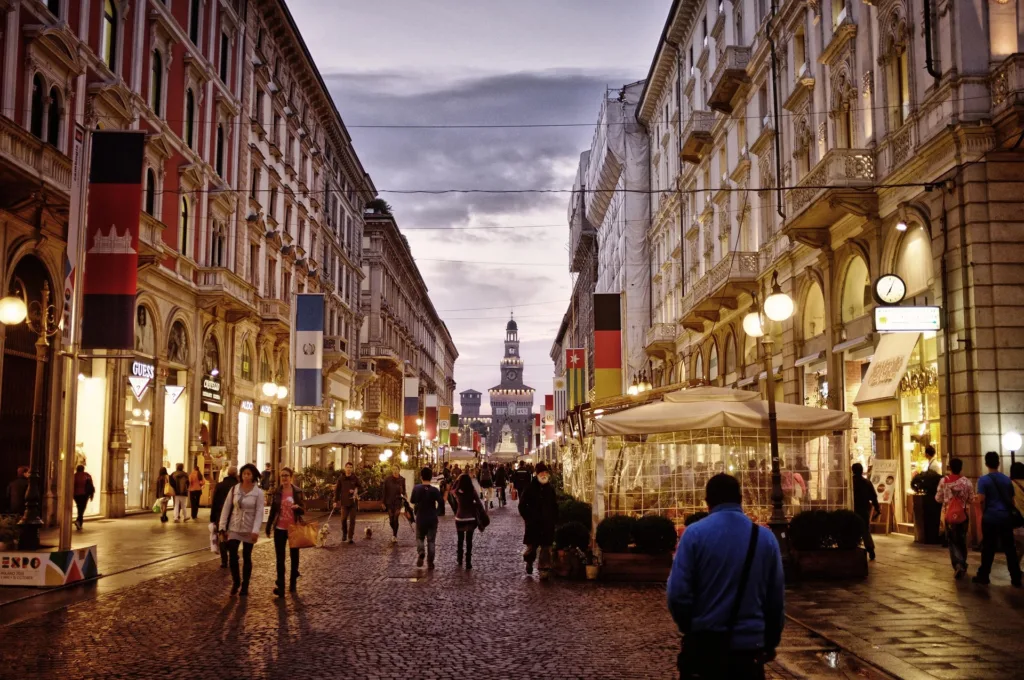
Image by Igor Saveliev
For a solo traveler on a budget, Milan’s public transport system is your best option. It’s reliable, cost-effective, and covers the entire city, including major attractions and off-the-beaten-path neighborhoods. Here’s why and how it works best for you:
Recommended Game Plan
1. Best Primary Option: Public Transport (Metro, Tram, and Bus)
- Why it’s the Best:
- Milan’s metro and trams are fast, affordable, and connect you directly to popular spots like the Duomo, Navigli District, Sforza Castle, and Porta Nuova.
- Unlimited day passes are incredibly budget-friendly:
- 24-hour Pass (€7/$7.40): Perfect for an exploration-packed day.
- 3-Day Pass (€12/$12.70): Ideal for solo travelers staying longer and wanting unlimited access without the hassle of recharging tickets daily.
- No need for expensive taxis or confusing parking if you’re new to the city.
- How to Maximize:
- Pair public transport with a bit of walking in compact neighborhoods like Brera or Porta Venezia to save even more.
- Make use of vintage trams for scenic and Instagram-worthy rides (especially Tram 1).
2. Best Free Option: Walking
- Why it’s Excellent:
- Many major attractions (like the Duomo, Galleria Vittorio Emanuele II, and Sforza Castle) are located close to each other, making Milan very walkable.
- Walking lets you explore side streets, artisan shops, and hidden gems that you’d miss otherwise.
- It’s 100% free—so you can stretch your budget further for food or sightseeing!
- When to Use It:
- Focus your walking days in areas like the Historic Center, Navigli Canals, or Brera District, where exploration on foot is easy and enriching.
3. Best for Short Scenic Rides: BikeMi
- Why it’s a Strong Runner-Up:
- Affordable for solo travelers at just €4.50 ($4.75) per day.
- Great for exploring scenic areas like Parco Sempione, Navigli, or quieter neighborhoods like Porta Romana.
- First 30 minutes are free after each docking, making BikeMi perfect for short, budget-friendly rides.
- When to Use It:
- When traveling between attractions that are close but not walkable (e.g., Duomo → Parco Sempione).
- Ideal for solo adventurers who enjoy a bit of exercise while sightseeing.
The Ultimate Budget Combo
For most solo travelers, a combo of public transport and walking is the best strategy. Here’s how you can seamlessly combine these options to save money and explore Milan:
- Buy a Multi-Day Public Transport Pass (€12 for 3 days):
Use unlimited metro, trams, and buses for efficient travel between districts or to reach destinations farther away (like Navigli or Porta Nuova). - Explore on Foot:
Walk through compact areas like the Historic Center (Duomo, Galleria, Brera) or along the Navigli canals. This way, you only use transport for longer distances. - Rent a BikeMi for Scenic Spots (€4.50/day):
Incorporate fun and eco-friendly biking around green spaces, canals, or quieter neighborhoods for short trips.
Avoid These for a Budget-Friendly Trip
- Taxis: Way too expensive unless absolutely necessary (starts at €6 and climbs fast).
- Ride-Sharing Apps (Uber): Costly, often comparable to taxis for solo riders.
- Car Rentals: Not worth it for Milan’s compact city layout and parking headaches.
In Conclusion: Public Transport + Walking Wins
If you’re on a tight budget, Milan’s public transport (metro, buses, trams) with a €12 3-day pass is hands-down the best option. Pair this with walking within neighborhoods to enjoy the city’s charm while keeping transportation costs low.
Budget Accommodations in Milan for Solo Travelers
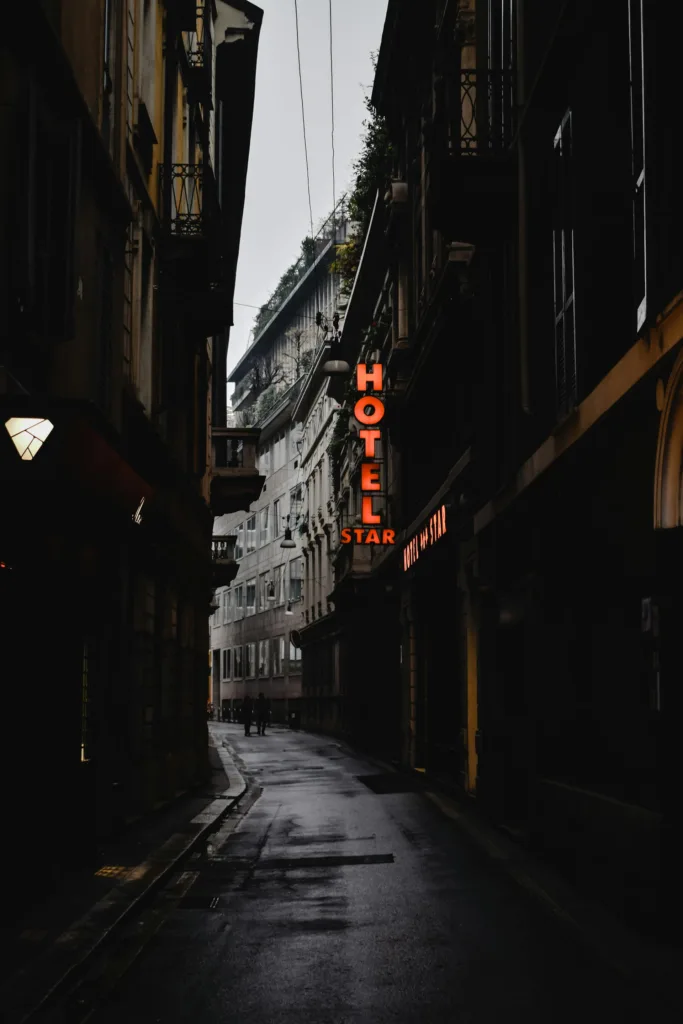
Photo by Eva Bronzini
Finding affordable and comfortable accommodations in Milan can feel like a challenge, especially for solo travelers on a budget. But don’t worry—this guide will show you where to stay, how to save, and even some clever alternatives to expensive hotels. Milan’s neighborhoods hold plenty of affordable gems if you know where to look.
1. Best Budget Hostels for Solo Travelers
Hostels are the go-to choice for solo budget travelers in Milan. They’re affordable, social, and often come with extras like free meals or events. Here are some top picks based on price, location, and perks:
1. Ostello Bello Grande
- Price: Starting at €45-€55 ($48-$58) per night for dorm beds.
- Why It’s Great:
- Ranked as one of the best hostels in Milan by solo travelers.
- Located near Milan Centrale Station, making it perfect for easy airport/train access and day trips.
- Includes free breakfast, free dinner (pasta nights!), and free aperitivo—a huge money-saver.
- Lively atmosphere with events, games, and a rooftop terrace for socializing.
2. YellowSquare Milan
- Price: Starting at €30-€50 ($32-$53) per night for dorm beds.
- Why It’s Great:
- Fun, creative vibe with modern design—great for travelers looking to meet people.
- Located near Porta Romana, a vibrant neighborhood filled with cafes and local restaurants.
- Includes co-working spaces, making it perfect for digital nomads or remote workers.
3. Combo Milano
- Price: From €35-€60 ($37-$64) per night.
- Why It Stands Out:
- Stunning location in the trendy Navigli Canals area.
- Features modern facilities and a quieter atmosphere compared to party hostels.
- Hybrid option: Shared dorms and private rooms for those who value privacy.
4. Madama Hostel & Bistrot
- Price: Around €30-€45 ($32-$48) per night.
- Why Choose It:
- Located in the artsy Porta Romana district, away from tourist crowds.
- Free breakfast and dinner included, plus a lively bar on-site.
- Ideal for social yet laid-back solo travelers.
Insider Tip for Hostels:
Book directly through the hostel’s website for better rates, free upgrades, or perks like free drinks or earlier check-in. Avoid third-party booking fees where possible.
2. Best Budget-Friendly Airbnb Options
For solo travelers who value privacy, Airbnb offers an excellent alternative to hostels. Milan’s Airbnb options range from cozy studios to private rooms in shared apartments.
- Best Neighborhoods for Affordable Airbnbs:
- Navigli Canals: Vibrant, full of cafes, nightlife, and affordable options starting at €50-€70 ($53-$74) per night.
- Porta Romana: A mix of local charm and convenient metro access. Great Airbnb rooms from €40-€60 ($42-$64) per night.
- Lambrate or Città Studi: Slightly outside the tourist center but quiet, well-connected neighborhoods where prices drop to €35-€50 ($37-$53) per night.
- Pro Tips for Airbnb:
- Look for “long-stay discounts” if you’re staying more than 5-7 days. Hosts often offer up to 15-25% off for longer bookings.
- Use Airbnb’s private room filter for super-affordable deals while still enjoying a local residential vibe.
- Read reviews closely for details on metro access—this ensures you’re still within commuting distance of Milan’s attractions.
Hidden Ways to Save on Accommodation
Here’s where you can truly make a difference in your Milan budget:
A) Stay Slightly Outside the City Center
- Milan’s surrounding neighborhoods like Lambrate, Bicocca, or Greco-Pirelli offer significantly cheaper stays while still being connected by metro or tram.
- Accommodation Prices: Hostels, hotels, or Airbnb often drop by 20-30% in these quieter areas.
B) Use Discount Apps and Memberships
- Hostelworld Memberships: Becoming a frequent-booker member at Hostelworld can unlock price drops on Milan hostels.
- Use Booking.com Filters: Use price range filters and look for “last-minute deals” if you’re flexible.
- Student Discounts: Many hostels and accommodations in Milan accept ISIC cards for 10-15% off.
C) Explore Alternative Stays
- Volunteering Programs (Workaway): Stay for free by volunteering a few hours a day. Common gigs in Milan include light housework or assisting in local projects.
- Cost: Free accommodation + meals in exchange for work.
- House Sitting: Platforms like TrustedHousesitters let you stay for free while watching over someone’s home or pets. Perfect for longer stays.
What To Avoid for Budget Travelers
- Hotels in the City Center: These are notoriously overpriced. Even “budget” hotels end up starting at €120+ ($128) per night with little added value for solo travelers.
- Tourist-heavy B&Bs: Areas near the Duomo often charge higher nightly rates aimed at wealthier tourists. Venture just a few metro stops away for more local, affordable options.
- Unreviewed Airbnbs: These can sometimes lead to surprise added fees, like extra cleaning costs or lack of amenities.
Final Budget Accommodation Tips
- Book as early as possible—prices spike during Milan Fashion Week or major events like Salone del Mobile.
- Choose hostels or Airbnbs with cancellation policies, so you can rebook if something cheaper pops up.
- Use off-season booking strategies (like January-April or September-October) to find significant discounts.
By staying flexible, creative, and planning ahead, sticking to a €30-€50 per night accommodation budget in Milan is entirely doable—even for solo travelers!
Budget Dining in Milan: How Solo Travelers Can Eat Well Without Overspending
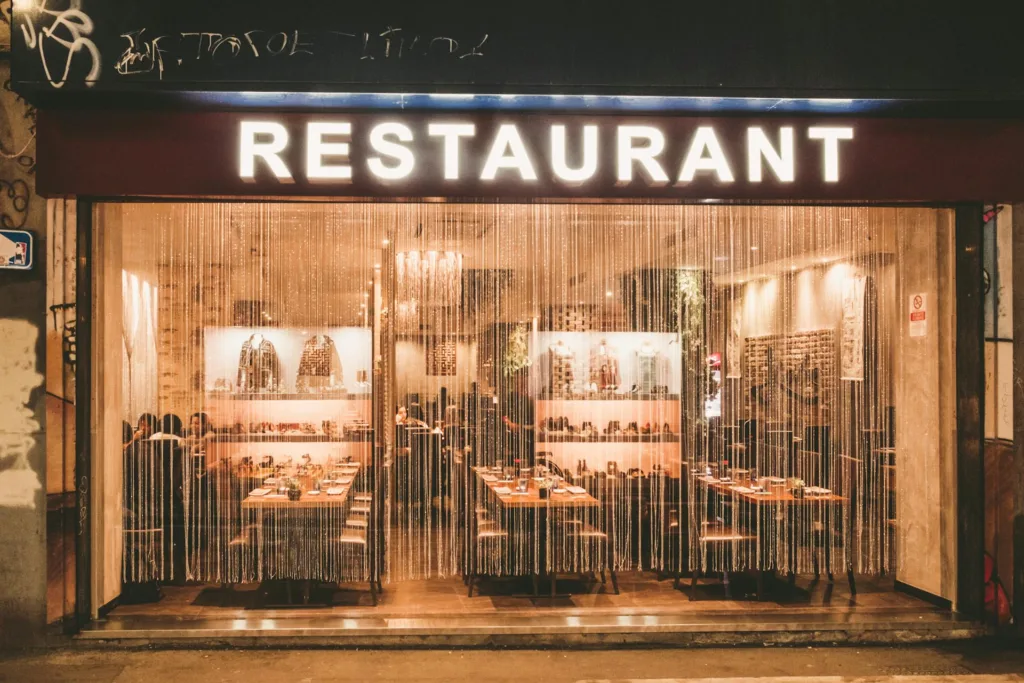
Photo by Enrico Frascati
Milan is known for its culinary legacy, from creamy risotto to crispy panzerotti, but dining out doesn’t have to be expensive! Whether it’s hidden trattorias, local markets, or the city’s famous aperitivo, here’s how budget-conscious solo travelers can eat like a local while saving euros.
Mastering Milan’s Affordable Food Scene
Knowing how to navigate Milan’s dining culture is key to staying on budget. Here’s what to know:
- Skip the Tourist Traps:
- Restaurants near the Duomo, Galleria Vittorio Emanuele II, and other top attractions are notoriously overpriced.
- Instead, head a few blocks away to less touristy neighborhoods like Porta Venezia, Navigli, or Porta Romana.
- Look for Trattorias and Osterias:
- These are small, family-run eateries where you can enjoy hearty, authentic Italian meals for €10-€15 ($11-$16) per dish.
- Bonus tip: Lunch menus are often cheaper than dinner (check for “Menu del Giorno”, or daily specials).
- Embrace Street Food:
- Grab local delights like panzerotti (fried or baked dough pockets filled with mozzarella and tomatoes) from spots like Luini Panzerotti, just steps from the Duomo. Cost? Just €3-€5 ($3.20-$5.30)—perfect for lunch on the go.
Breakfast in Milan on a Budget
Breakfast (or colazione) in Milan is traditionally light, centered around coffee and pastries. As a solo traveler, sticking to local breakfast norms can save you money while giving you an authentic daily start.
1. The Affordable Milanese Breakfast Routine
In Milan, breakfast is typically sweet, quick, and cheap. You won’t see big, hearty plates like in other countries, which works well for budget travelers.
What to Order (The Basics):
- Espresso or Cappuccino:
- Italians love their coffee simple. Grab espresso (shot) for €1-€1.50 or a cappuccino for €1.50-€2.50.
- Pro Tip: Order al banco (at the bar, standing) to avoid the “sitting fee” that could easily double your costs.
- Cornetto (Croissant):
- A flaky pastry, typically filled with jam, custard, or chocolate. Prices range from €1-€2.
- Brioche with Coffee:
- A popular combo of a coffee and pastry. Many cafes offer this for around €2.50-€3.50.
Best Budget Breakfast Spots:
- Panarello: Affordable bakery chain loved for its fresh cornetti.
- GluFree Bakery: Perfect for gluten-free travelers, offering pastries from €3-€5.
- Old School Cafes: Any small, non-touristy cafe tucked into side streets (away from landmarks) will deliver the most authentic, budget-friendly options.
2. Grocery Store Breakfasts (Solo On-the-Go Option)
For those who want a quick and cheaper solution, Milan’s grocery stores and bakeries are great options:
- What to Buy:
- Fresh pastries (€2-€3), yogurt (€1-€2), or fruits (€0.50-€1 per piece). Combine these for a €4 breakfast.
- Instant coffee packets or fresh espresso in grocery store cafés costs less than €1.
- Pro Tip:
Many small kiosks and bakeries near hostels/markets sell leftover pastries from the previous day at 50% off in the morning.
3. Tap Water Hack
Water is crucial for any traveler, so avoid overspending throughout the day:
- Tap water in Milan is safe and free to drink.
- Carry a reusable bottle and refill it at Milan’s public drinking fountains, called “fontanelle”. These are scattered around the city and marked clearly.
Lunch in Milan: Affordable and Authentic Meals
Lunch (pranzo) is an essential part of Italian culture, and Milan offers plenty of budget-friendly opportunities to enjoy traditional dishes without breaking the bank. Here’s how to enjoy a hearty and satisfying lunch while keeping costs low.
1. The “Menu del Giorno” Hack
- Many trattorias and osterias offer a “Menu del Giorno” (Daily Menu), which typically includes:
- A first course (primo – pasta or risotto).
- A second course (secondo – meat, fish, or vegetarian option).
- A side dish (contorno – salad or vegetables).
- A small drink or coffee.
- Cost: Usually ranges from €10-€15 ($11-$16), making it one of the best value options for lunch.
- Pro Tip: Look for smaller, family-run trattorias slightly away from tourist-heavy areas. They often have larger portions and more authentic meals.
2. Must-Try Cheap Milanese Dishes for Lunch
When in Milan, these are the budget-friendly dishes you must try:
- Risotto alla Milanese:
- Creamy risotto flavored with saffron, giving it a vibrant yellow hue.
- Found in most trattorias for €12-€15 ($13-$16).
- Pro Tip: Share the dish for its rich flavors; portions are often large.
- Cotoletta alla Milanese:
- A breaded and fried veal or chicken cutlet, similar to schnitzel.
- A traditional dish and often well-priced during lunch menus (€10-€15). Look for trattorias offering this as part of the Menu del Giorno.
- Panini or Focaccia Sandwiches:
- Perfect for solo diners on the go.
- Try panini stuffed with mortadella, prosciutto, or mozzarella for €5-€8 ($5.30-$8.50) at Milan’s local paninotecas (sandwich shops).
- Pasta al Ragù or Pesto:
- Classic Italian pasta dishes are widely available and reasonably priced at local trattorias (€8-€12 per dish).
- Pro Tip: Ask about daily specials for something fresh and seasonal at a lower price.
3. Best Spots for a Budget Lunch
Knowing where to eat lunch without tourist markups can save significant money. Here’s a list of tried-and-true spots where you’ll find authentic meals for a good price:
- Rosticceria Fontana
- Offers homemade Italian food like lasagna, risotto, and grilled meats, all under €10 ($11).
- Perfect for grabbing a quick plate of comfort food.
- Trattoria Sabbioneda
- Known for its Menu del Giorno, serving dishes such as risotto and cotoletta. Expect to pay around €12-€15 ($13-$16) for a satisfying lunch.
- Panzerotti from Luini
- For a lighter lunch or solo snack, grab a panzerotto for €3-€5 ($3.20-$5.30) to eat while exploring the Duomo area.
- Mercato Centrale (Central Market)
- Located at Milan Centrale Station, this food hall offers choices across many Italian cuisines.
- Meals like fresh pasta or pizza start at €6-€10 ($6.50-$11). Great for solo travelers because of communal dining spaces.
- Pizzium
- Perfect for pizza-by-the-slice or small personal pizzas. Prices range between €7-€10 ($7.50-$11).
4. Groceries and Lunch on the Go
If you’re trying to cut costs drastically, grocery stores and markets are your best bet for lunch. They often have fresh, pre-prepared meals like pasta, salads, and sandwiches.
- Best Grocery Chains for Budget Eats:
- Esselunga: Offers ready-made fresh pasta and salads for as low as €5 ($5.30) per meal.
- Carrefour Express: Good for sandwiches, pre-cut fruit, or yogurt under €4 ($4.25).
- Lidl: Highly affordable with baked goods, deli items, and fresh produce.
- Public Markets for Fresh Lunches:
- Mercato di Wagner: Offers local foods like fresh bread, cheeses, and meats to build your own picnic.
- Fiera di Sinigaglia (Saturdays): Affordable fresh street food and snacks.
5. Lunch Etiquette and Insider Tips for Milan
- Avoid Tourist Markups:
- Restaurants near Piazza del Duomo charge a premium simply for location. Walk 10 minutes into neighborhoods like Porta Venezia or Navigli for cheaper, high-quality alternatives.
- Eat Like a Local—Timing Matters:
- Italians eat lunch typically between 12:30 PM and 2:30 PM. Many places only offer lunch menus during this time, so plan accordingly.
- Tap Water Tip:
- Italians almost never serve free tap water at restaurants. Ordering “acqua naturale” (still water) will cost around €2-€5. Carry a reusable water bottle to avoid this extra charge.
- Solo Dining in Trattorias:
- Eating alone in Italy is entirely normal. Most trattorias are welcoming to solo diners, especially during lunch hours.
- Look for places with outdoor seating to enjoy your meal while people-watching.
Recap: Budget Lunch Strategy for Solo Travelers
Here’s how you can enjoy a satisfying lunch while keeping your daily costs low:
- Opt for: Menu del Giorno (€10-€15) at trattorias for a full, authentic meal.
- Grab quick eats: Street food like panzerotti (€3-€5) or fresh pizza slices (€3-€7).
- Shop local: Markets or grocery stores for DIY lunches starting at €4-€6.
- Avoid extras: Skip tourist hotspots and always confirm hidden fees like the coperto (cover charge).
Aperitivo and Dinner in Milan on a Budget
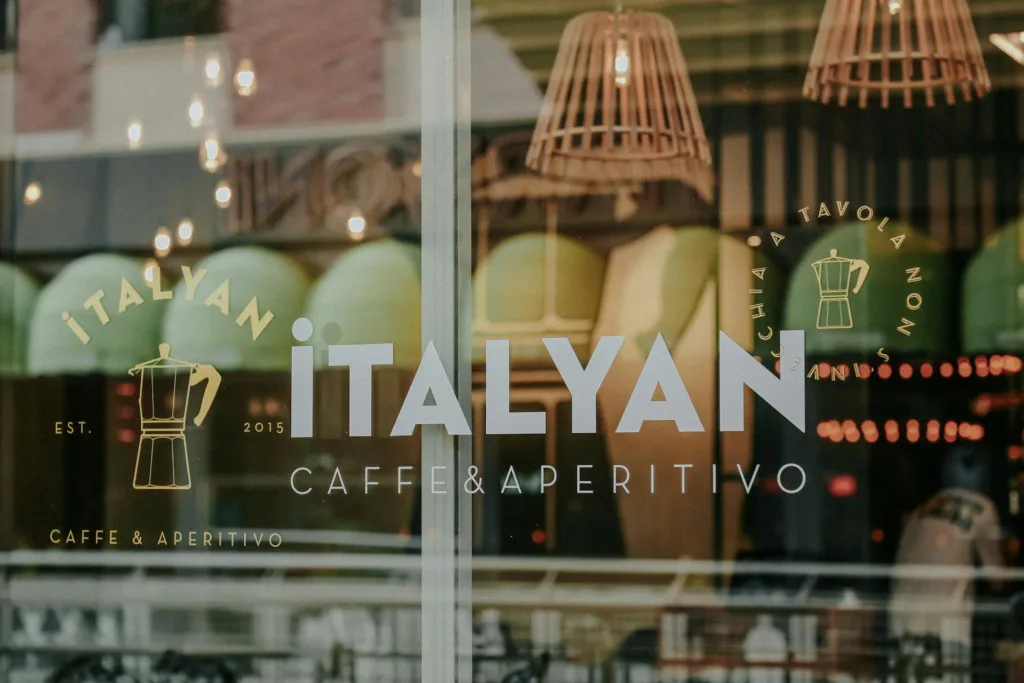
Photo by Taha Samet Arslan
Milan is home to aperitivo culture, making it a fantastic way for solo travelers to enjoy an evening out on a budget. From sipping an Aperol Spritz while snacking on delicious small plates to exploring affordable dinner spots, here’s your detailed guide for an evening meal without overspending.
1. What is Aperitivo?
Aperitivo is Milan’s version of happy hour: a pre-dinner tradition where you order a drink, and it’s served with a spread of small bites or even a full buffet-style offering—often doubling as dinner for budget-savvy diners.
- How Aperitivo Works
- You pay for a drink (cocktails, beer, or wine, typically priced at €8-€15/$8.50-$16), and food is included.
- The offerings vary from light snacks (chips, olives, breadsticks) to more elaborate all-you-can-eat buffets with pasta, salads, charcuterie, and desserts.
- Best Time for Aperitivo in Milan:
- Aperitivo is typically served from 6:00 PM to 8:30 PM, making it an ideal early dinner option for solo travelers.
2. Best Aperitivo Spots in Milan
Here’s where to find quality aperitivo spots without overspending:
- Navigli District
- The heart of Milan’s aperitivo culture, filled with bars offering scenic views along the canals.
- Top Picks:
- Spritz Navigli: Classic Aperol Spritz paired with a generous light buffet for just €9 ($9.50).
- Manhattan Navigli: All-you-can-eat aperitivo buffet + drink for €12-€15 ($13-$16).
- Terrazza Aperol (Near the Duomo)
- Modern rooftop bar with stunning views of the Duomo. Drinks are slightly pricier (€12-€15) but come with complimentary snacks and an unbeatable sunset vibe.
- Bar Basso
- A vintage experience in Porta Venezia, and the birthplace of the iconic Negroni Sbagliato. Drinks start at €10, with simple but high-quality bites.
- Frida Milano (Isola District)
- Best for a laid-back, local vibe. Affordable cocktails (€8-€10) served with authentic food, perfect for mingling with locals.
3. Can You Make Aperitivo Your Dinner?
Yes! For solo travelers looking to stretch their budget, aperitivo can easily replace dinner. Here’s how to maximize it:
- Choose spots offering buffet-style aperitivo, where portions are unlimited, eliminating the need for a second meal.
- Arrive early, as popular spots like those in Navigli might run out of the best dishes by 8:00 PM.
- Pro Tip: Most places won’t rush you out, so enjoy your drink and food slowly—it’s Milanese style!
4. Budget-Friendly Dinner Options
If you prefer a more traditional sit-down dinner after aperitivo, here’s how to enjoy Milan’s food scene affordably:
A) Best Cheap Dinner Spots
- Spontini
- Renowned for its Milanese-style thick crust pizza. Huge portions cost just €6-€9 ($6.50-$9.50). Perfect for a solo dinner on the go.
- Trattoria La Madonnina
- Hidden gem in Porta Ticinese known for hearty Italian meals (pasta dishes for €8-€12/$8.50-$13).
- Offers a cozy atmosphere, ideal for solo travelers looking for a relaxed, authentic dining experience.
- Il Kiosko Milano
- A budget spot for fresh pasta and risottos under €12 ($13), located in the Lambrate district, away from tourist zones.
- All’Antico Vinaio
- Famous for massive, stuffed focaccia sandwiches from Florence now in Milan, priced affordably at €8-€10 ($8.50-$11) for one that can easily be your entire dinner.
B) Street Food Dinner
Street food is Milan’s best-kept secret for solo travelers wanting tasty and affordable evening meals.
- Mercato Centrale (Central Market):
- Grab freshly made pasta, pizza, or focaccia for around €6–€12 ($6.50-$13). The market vibe is lively, and portions are solo-friendly.
- Panzerotti from Luini (Again!):
- Their panzerotti (fried dough pockets with fillings) aren’t just for lunch. Have one or two for a light, cheap dinner under €8 ($9).
5. Drinking on a Budget in Milan
While aperitivo comes with drinks, here’s how to save on beverages throughout the day:
- Tap Water Always Wins
- Remember, tap water in Milan is perfectly safe and free. Avoid purchasing bottled water at restaurants unless necessary (€2-€5 per bottle). Carry a reusable water bottle and refill at public fountains.
- Budget-Friendly Wine Options
- Wine in Milan doesn’t need to be expensive. At most bars and trattorias, you can get a glass of house wine (vino della casa) for around €3-€5 ($3.20-$5.30).
- Visit grocery stores like Esselunga for high-quality bottles starting at €5-€7 ($5.30-$7.50).
- Coffee Etiquette
- Budget tip: Always drink your coffee (espresso or cappuccino) at the bar (al banco) for €1–€2. Sitting at a café table can double the price.
6. Daily Food and Drink Strategy for a Solo Traveler
Here’s how you can eat and drink well in Milan on a budget:
- Breakfast: Coffee and croissant at a café (€3-€4) or grab a pastry from a bakery.
- Lunch: A Menu del Giorno at a trattoria (€10-€15) or street food options for around €5-€10.
- Dinner/Evening: Aperitivo (€8-€12) which includes drinks and a hearty buffet. Alternatively, visit a trattoria for a sit-down meal under €15.
Total Daily Food Budget: ~€20-€30 ($21-$32) if you leverage aperitivo or street food wisely.
Essential Tips for Eating in Milan Without Overpaying
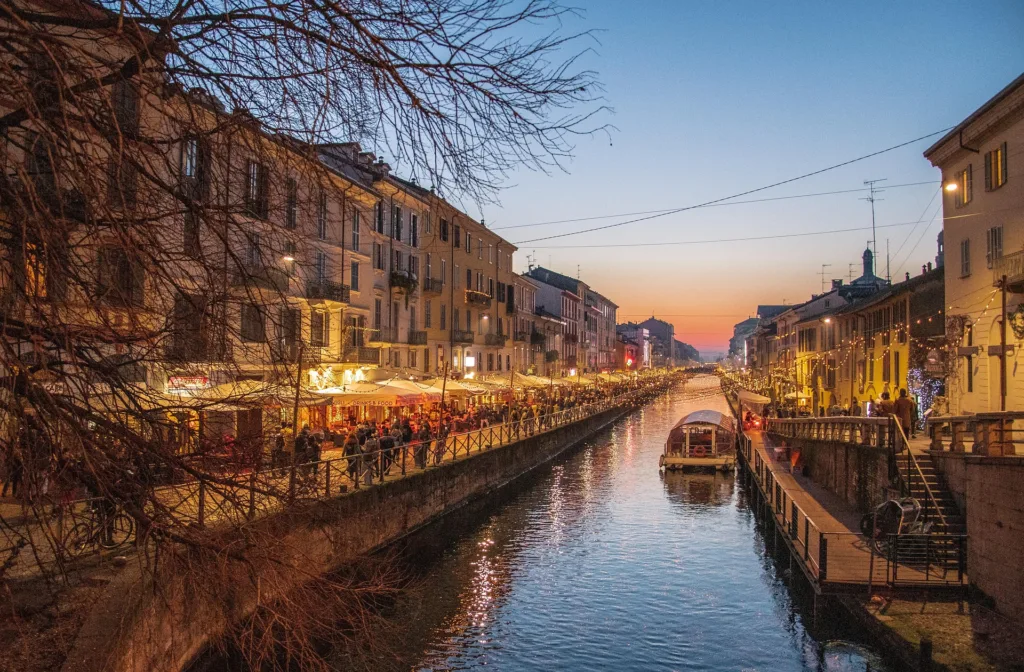
Image by alessandra barbieri
Dining in Milan is an experience, but it can also come with unexpected costs if you’re not prepared. From seating fees to knowing when and where to eat, here’s how to avoid common dining mistakes and stretch every euro.
1. Be Aware of the “Coperto” (Cover Charge)
- What is Coperto?
- The coperto is a sitting fee added to your bill when you dine at sit-down restaurants or trattorias.
- It typically ranges from €2–€5 ($2.10-$5.30) per person and is listed on the menu (but not always prominently).
- It covers things like bread, table service, and general restaurant upkeep.
- How to Avoid It:
- Ask before ordering: “C’è un coperto?” (Is there a cover charge?)
- Opt for places with outdoor seating where the coperto is often excluded.
- Stick to cafes, street food spots, and casual eateries where there’s no coperto.
2. Al Banco vs. Al Tavolo (Standing vs. Sitting)
- What’s the Difference?
- If you order your snack or coffee at the bar (al banco) and stand while eating or drinking, you’ll pay significantly less.
- If you choose to sit at a table (al tavolo), especially outdoors, prices can double or even triple.
- Example:
- A cappuccino costs €1-€1.50 ($1.10-$1.60) if you drink at the bar. That same cappuccino will cost €2.50-€4 ($2.70-$4.30) if you sit at a table.
- Pro Tip:
- For quick meals or coffees, always eat or drink at the counter (al banco) and save your seated dining experiences for full lunches or dinners instead.
3. Water: Tap Water is Free—If You Know the Hack
- Bottled Water Costs Extra:
- At sit-down restaurants, they’ll usually serve bottled water by default, adding €2-€5 ($2.10-$5.30) to your bill.
- How to Ask for Free Tap Water:
- Politely request “Acqua del rubinetto” (tap water) if available. Not all restaurants will agree, but many casual places or hostels are open to providing it.
- Fill Up On-The-Go for Free:
- Carry a reusable water bottle and refill it at Milan’s fontanelle (public drinking fountains), which provide safe, clean tap water across the city.
- Look for the green or blue fountains scattered through neighborhoods and near landmarks.
4. Timing Your Meals is Key
- Eat When Italians Eat:
- Lunch: Italians have lunch between 12:30 PM and 2:30 PM. This is the best time to find affordable menus like the Menu del Giorno (Daily Menu) at trattorias.
- Dinner: Served later than in many countries, with most locals sitting down around 7:30 PM–9:00 PM. Skip early dinners in touristy areas to avoid inflated “tourist prices.”
- Why Timing Matters:
- Many trattorias and casual lunch spots don’t stay open all day—arriving outside normal meal hours means fewer affordable local options. Instead, you’ll end up overpaying at cafés or tourist restaurants.
5. Study the Menu Carefully to Avoid Surprises
Look for These Key Details on the Menu:
- Coperto (cover charge): Usually listed in small print at the bottom of the menu or near pricing notes.
- Pane (bread charge): Even if they bring bread to the table unrequested, you may be charged for it (typically €2-€3 per person).
- Tourist Menus: Avoid “fixed-price” menus near attractions unless reviews confirm the food quality.
- Pro Tip: Ask for both the English AND Italian menus to compare—often tourists are given a separate, more expensive menu.
6. Never Feel Pressured to Tip
- Understanding Italian Tipping Culture:
- Unlike in the US, tipping isn’t expected in Italy. Most bills already include service or the coperto, so there’s no need to leave extra unless you had exceptional service.
- If You Do Tip:
- Italians typically leave coins (5%-10%) for outstanding service only, but it is not mandatory.
7. Street Food for Cheap and Delicious Meals
- What to Know About Street Food:
- Milan has excellent street food options that save you from dining fees altogether while still providing authentic tastes:
- Panzerotti from Luini costs €3-€5 for a filling dough pocket.
- Pizza al taglio (pizza slices) costs as little as €2-€4 per slice and is portioned generously.
- Milan has excellent street food options that save you from dining fees altogether while still providing authentic tastes:
- Best Markets for Cheap Eats:
- Wander through food markets like Mercato Centrale (inside Milan Centrale Station), where you can grab diverse local dishes for €5-€10 ($5.30-$11).
8. Aperitivo Pro Tips
Aperitivo is a budget traveler’s secret weapon for dinner, but here’s how to get the best value:
- Go Early:
- Aperitivo buffets can run out of the best dishes by 8:00 PM, so arrive early and get first pick.
- Know What’s Free:
- Most aperitivo places only charge for drinks—food is considered complimentary, but don’t over-order drinks thinking it’s expected. One drink is enough!
- Ask Before Ordering:
- Confirm if it’s a limited selection (small bites) or a full buffet. Buffets are better for stretching your euros and can often replace dinner.
9. Avoid Overpriced Tourist Spots
- Restaurants near landmarks like the Duomo or Galleria Vittorio Emanuele II charge premiums for location. You’ll pay an extra €5-€10 ($5.30-$11) per dish compared to eateries just a block or two away.
- How to Spot a Tourist Trap:
- Menus translated into multiple languages beyond Italian and English.
- Staff aggressively calling out to passersby.
- No locals dining inside.
10. Dining Alone? No Problem!
Milanese trattorias and cafés are solo-traveler-friendly, so don’t shy away from dining out alone:
- Pro Tip: Choose places with communal tables or outdoor seating for a more relaxed solo experience.
- Many trattorias (especially locally-run ones) are accustomed to solo diners, particularly at lunch. Focus on smaller, authentic spots over formal restaurants.
11. Use Food & Dining Apps
- TheFork (Italy’s version of OpenTable):
- Offers discounts (sometimes up to 50% off) at restaurants when you book a table through the app. Perfect for budget travelers.
- Too Good To Go:
- An app where you can buy restaurants’ leftover food at steep discounts (~50% off). Great for budget-conscious solo dining.
Saving Money on Milan Attractions: The Ultimate Guide for Solo Travelers
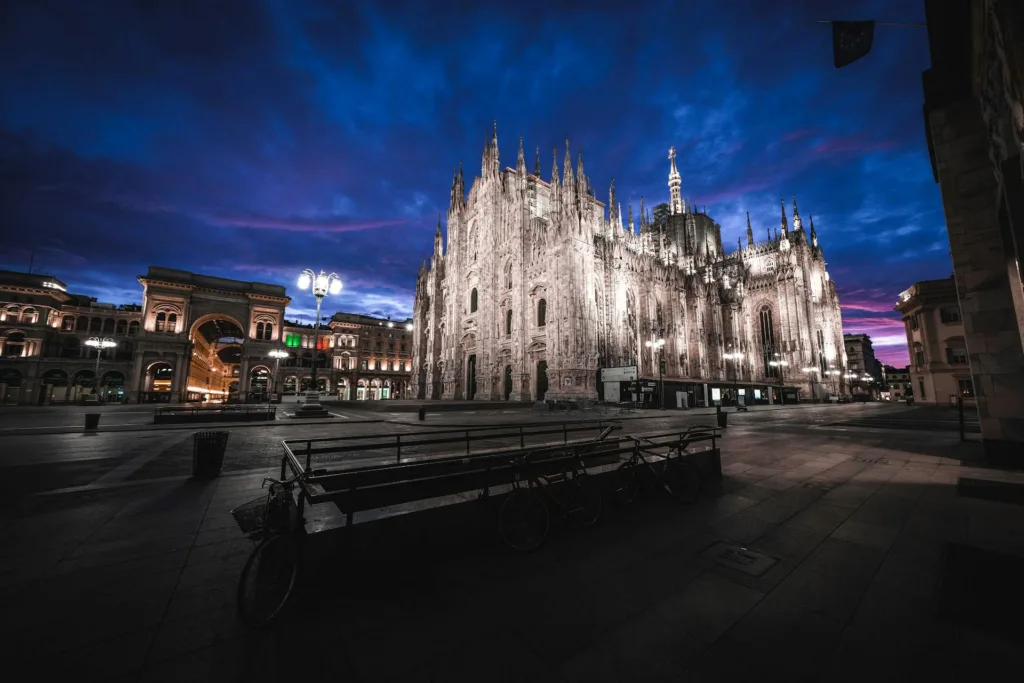
Photo by Francesco Ungaro
Milan is packed with historic landmarks, world-class museums, and Instagram-worthy spots. The great news? You don’t need a huge budget to enjoy them! Here’s a detailed guide to visiting Milan’s top attractions and hidden gems without draining your wallet.
1. Take Advantage of Free Attractions
Many of Milan’s most iconic landmarks and experiences cost nothing—or very little. Here’s where to go:
A) Free Landmarks and Public Spaces
- Duomo di Milano (Milan Cathedral) – Exterior:
- Admire the breathtaking Gothic façade of this iconic landmark for free. Stroll around Piazza del Duomo to capture great photos.
- Pro Tip: If you want to visit the inside or climb to the Duomo rooftop, go on free entry days or at discounted times (see below).
- Galleria Vittorio Emanuele II:
- Milan’s most famous shopping arcade is free to enter and perfect for a leisurely stroll. Marvel at its intricate mosaics and glass ceilings without buying anything.
- Navigli Canals:
- Walk alongside Milan’s picturesque canals, particularly during sunset, for vibrant street scenes and free entertainment.
- Parco Sempione:
- Perfect for solo travelers looking to relax between sightseeing. Explore this lush park for free, and visit Arco della Pace (Arch of Peace) for photos.
B) Churches Worth Visiting (Free Entry)
- Chiesa di San Maurizio al Monastero Maggiore: Known as the “Sistine Chapel of Milan,” this church is filled with awe-inspiring frescoes and offers free admission.
- Basilica di Sant’Ambrogio: A Romanesque masterpiece with historic significance, free to enter.
2. Plan Visits Around Free Museum Days
Milan has specific days where many museums and attractions waive entry fees. Here’s how to take advantage:
- First Sunday of Every Month:
- Civic museums like the Museo del Novecento (Modern Art Museum), Sforza Castle Museums, and Palazzo Moriggia are free to enter.
- Arrive early to avoid long lines, especially at popular spots like Castello Sforzesco.
- Other Seasonal Free Days:
- Watch out for free entry announcements during cultural festivals or Italy’s Settimana dei Musei (Museum Week) in spring.
3. Buy the Milan Pass or MilanoCard
For travelers visiting multiple paid attractions, investing in one of these city passes can save big:
The Milan Pass
- Cost: Starts at €75 ($80), valid for 48 hours.
- Perks:
- Free entry to major attractions like the Duomo Rooftop, La Scala Museum, and Sforza Castle.
- Includes unlimited public transportation for two days.
- Best For: Travelers planning to visit 3+ attractions in two days.
The MilanoCard
- Cost: Starts at €11 ($12) for 24 hours.
- Perks:
- Discounts at museums, restaurants, and attractions.
- Includes free metro, tram, and bus travel during its validity.
- Best For: Budget-conscious solo travelers who want discounts rather than free entry.
4. Budget Options for Paid Attractions
Duomo di Milano: Rooftop and Interior
- Ticket Price: €10 ($11) for stairs, €15 ($16) for elevator.
- Budget Hack:
- Visit early in the morning or late afternoon to avoid peak times and long queues.
- If you only want to visit the cathedral itself, skip the rooftop for just €5 ($5.30).
Sforza Castle and Museums
- Entry Fee: €5 ($5.30) for full-access museums inside the castle.
- Budget Hack:
- The castle grounds and gardens are free to enter, so only pay if you’re interested in seeing the art collections inside.
- Go on the first Sunday of the month to access museums for free.
The Last Supper (Cenacolo Vinciano)
- Entry Price: €15 ($16).
- Budget Hack:
- Tickets sell out quickly—book months in advance to get the face value price.
- If sold out, consider guided tours that include Last Supper tickets bundled with other attractions.
- Alternative Experience: Stop by Santa Maria delle Grazie Church, where the fresco is housed, for free access to the church itself.
5. Explore Milan on Foot or Bike
Walking tours and bike rides offer a fantastic way to soak in Milan’s culture without shelling out for guided tours.
Free Walking Tours
- Best Providers:
- GuruWalk and FreeTour.com host donation-based tours led by knowledgeable locals. These cover major landmarks and hidden gems.
- Suggested donation: €5–€10, making it budget-friendly.
- Tours Available: Duomo, Navigli District, or secret art spots.
Biking through Milan
- Rent a BikeMi bike for just €4.50 ($5) per day and explore scenic areas like Parco Sempione, Brera District, and streets near the Navigli.
6. Skip the Touristy Extras
Tourist-targeted experiences, while tempting, can often cost more than they’re worth. Here’s what to skip:
- Skip Hop-On-Hop-Off Buses (€20+): Stick to Milan’s efficient tram and metro system for the same routes at a fraction of the cost.
- Skip Guided Duomo Tours: Instead, consider free apps or audioguides for your own self-paced exploration.
7. Insider Tips for Budget Sightseeing
- Combine Transport and Attractions:
- Use public transportation to hop between free attractions efficiently. A 24-hour travel pass (€7) lets you cover all zones in Milan while saving on taxis.
- Pack Snacks & Water for Day Trips:
- Save money by bringing food and water when visiting parks like Parco Sempione or outdoor areas like Navigli. Cafes near landmarks are pricey.
- Best Timing for Photos:
- Visit Piazza del Duomo early in the morning (before 9 AM) or late at night to avoid crowds and get iconic photos—free and hassle-free.
Final Budget Hacks for Attractions
- Always Check Local Free Days: Look up museum websites to confirm specific free days or seasonal promotions.
- Bundle Tickets: Combination tickets often save 10–30% compared to buying individual attraction entries.
- Skip Paid Skip-the-Line Tickets: Most sites are manageable with regular tickets if you visit early or midweek.
- Enjoy the Outdoors: Parks, piazzas, and streets like Corso Garibaldi or Via Torino are completely free and filled with charm.
The Best Time to Visit Milan on a Budget: A Seasonal Guide
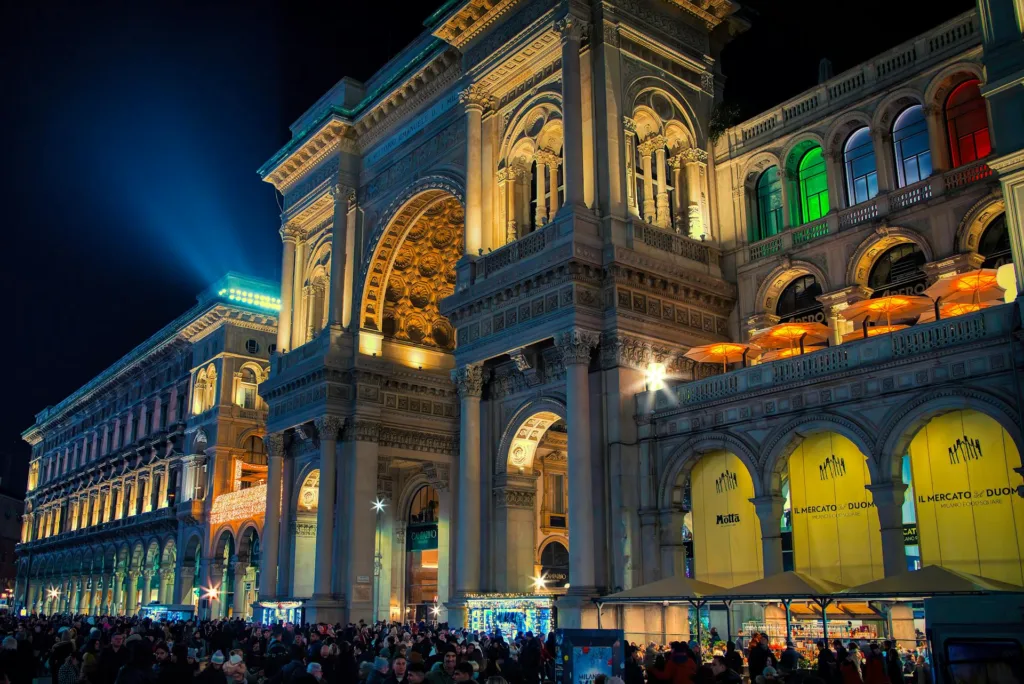
Photo by Franco Noviello
Milan is a city that changes with the seasons, each offering a different vibe, set of events, and budget opportunities. Here’s an in-depth guide to help solo travelers understand Milan’s seasons and plan accordingly.
Spring (March to May): Best for Comfortable Weather and Lower Crowds
Spring in Milan is one of the best times to visit. The weather is mild, flowers begin to bloom in Parco Sempione, and the city isn’t as crowded as summer. It’s also budget-friendly compared to the peak tourist months.
- Why Visit in Spring?
- Fewer tourists mean lower accommodation prices compared to summer.
- Temperatures range from 10°C–20°C (50°F–68°F), making it perfect for walking tours and outdoor exploration.
- Shoulder season for flights, making tickets more affordable than summer.
- Seasonal Events to Catch:
- Settimana dei Musei (Museum Week): Free entry to museums and archaeological sites (usually in March or April).
- Milano Design Week (April): Public art exhibits and pop-up installations scattered throughout the city—many of them free.
- Spring Markets: Navigli hosts vintage markets perfect for budget souvenirs.
- Tips for Budget Travelers:
- Book flights and accommodations early, especially for April events like Design Week.
- Pack layers for unpredictable weather (cool mornings, warmer afternoons).
Summer (June to August): Peak Season with Budget Challenges
Summer in Milan is high season for tourism, especially in June and July. The weather is warm, and crowds flock to the city. However, it’s also the most expensive time to visit, with increased accommodation rates and busy attractions.
- Why Visit in Summer?
- Long daylight hours (sunset around 9 PM) give you extra time to explore the city.
- Open-air events abound, like concerts, film screenings, and festivals.
- Nearby Lake Como and coastal regions are in their peak beauty—perfect for day trips.
- Challenges for Budget Travelers:
- Accommodation prices can double during peak months.
- Long lines at attractions like the Duomo and Sforza Castle require smart planning or pre-booked tickets.
- Seasonal Events to Catch:
- Estate Sforzesca (Summer Events at Sforza Castle): Affordable concerts and performances in the castle’s courtyard.
- Milan Fashion Summer Arts Events (July): Free art and music activities hosted around the city.
- Tips for Budget Travelers:
- Plan visits early in the morning or late afternoon to avoid crowds and heat.
- Take advantage of free parks, like Parco Sempione, or refresh by the Navigli canals.
- If staying in Milan during August, many locals leave for holiday, meaning quieter streets but limited dining options.
Autumn (September to November): Best for Cultural Experiences and Deals
Autumn is another shoulder season, with cooler weather and thinning crowds after the summer peak. September, however, sees a minor price spike due to Milan Fashion Week.
- Why Visit in Autumn?
- Temperatures cool to 12°C–20°C (54°F–68°F), ideal for walking the city.
- Fewer tourists mean you can enjoy Milan’s landmarks more peacefully—especially in October and November.
- Budget-friendly flights and accommodations return in October, once fashion events end.
- Seasonal Events to Catch:
- Milan Fashion Week (September): While pricey, you can still experience the fashion buzz by exploring free pop-ups and exhibitions across the city.
- Oh Bej! Oh Bej! (Autumn Fair, November): A street fair filled with vendors selling crafts, food, and vintage items.
- Tips for Budget Travelers:
- Book accommodations for late October-November to avoid Fashion Week prices.
- Dress in layers—autumn mornings can be chilly, but afternoons are perfect for outdoor sightseeing.
- Take advantage of discounted museum tickets or cultural promotions often offered by local tourism boards in November.
Winter (December to February): Best for Bargain Travelers
Winter in Milan may be cold, but it’s the most budget-friendly season to visit. With the exception of the holiday season in December, travelers can enjoy lower accommodation and airfare costs. Plus, Milan sparkles with festive charm in late December.
- Why Visit in Winter?
- Accommodation prices plummet in January and February, offering some of the year’s best deals.
- Milan becomes less crowded, making landmarks like the Duomo and Galleria Vittorio Emanuele II more pleasant to explore.
- Winter sales (Saldi di Inverno) start in January across Milan’s fashion districts, offering discounts of 30%-70%.
- Seasonal Events to Catch:
- Christmas Markets (December): The Duomo square comes alive with stalls selling festive treats, handmade crafts, and gifts.
- La Scala Opera Season (December): Budget travelers can book tickets for less popular performances while enjoying Milanese culture.
- Carnival (February): Experience modest parades and celebrations in late winter.
- Tips for Budget Travelers:
- Pack warm clothes (average temperatures hover at 2°C–8°C / 36°F-46°F).
- Late January is ideal: Enjoy both winter sales and lower attraction prices.
- Use public transport to stay warm while exploring; passes are affordable, starting at €7/day.
Best Seasons for Different Travelers
- For Bargain Seekers: January and February (cheapest flights and stays).
- For Culture Fans: Spring (museums, outdoor art, and Design Week).
- For Fabulous Weather: Late April-May or October-November.
- For Festive Vibes: Late December (Christmas lights, markets).
Best Budget Time to Visit Milan, Italy
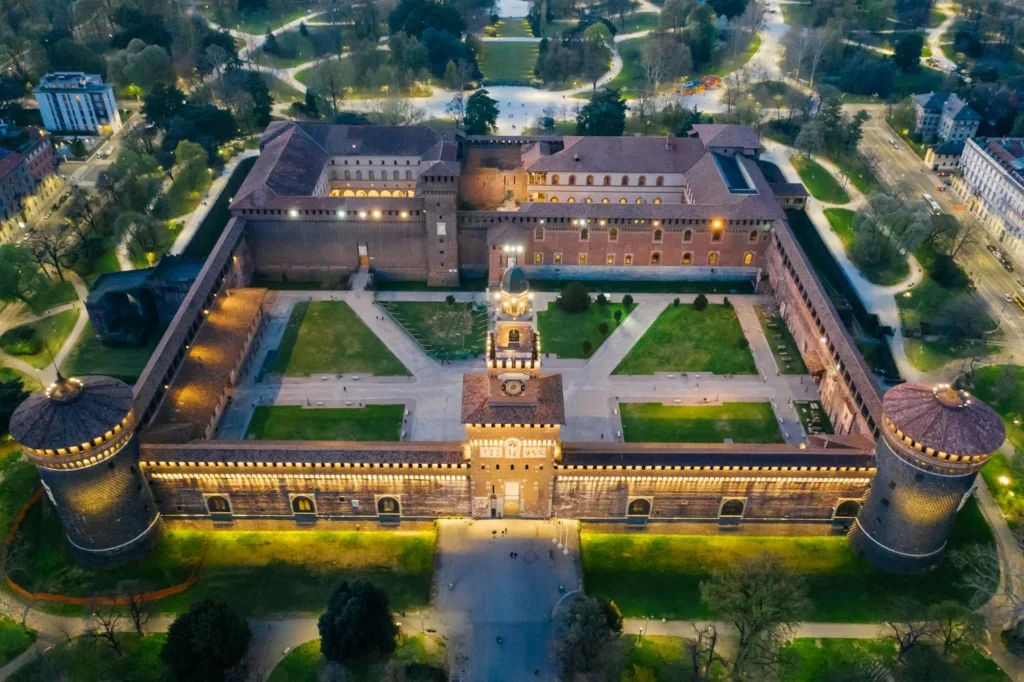
Photo by Mikhail Nilov
For budget-conscious solo travelers, the cheapest time to visit Milan is during the winter months, specifically January and February, after the busy holiday season ends. Here’s everything you need to know about this period and why it’s the most affordable time for a Milan trip.
Why January and February Are the Cheapest Months
- Low Accommodation Prices
- With most tourists gone after Christmas and New Year’s festivities, hotels, hostels, and Airbnbs drop their rates significantly to attract off-season travelers.
- You’ll find hostels starting at €20–€30 ($21–$32) per night and affordable Airbnbs under €40–€50 ($42–$53) in quieter neighborhoods (like Città Studi or Lambrate).
- Pro Tip: Book early to snag deals, especially at highly-rated budget spots like Ostello Bello Grande.
- Cheaper Flights
- Flights to Milan drop to their lowest prices in January and Februarysince they’re post-holiday and pre-spring break—prime off-peak time!
- Round-trip flights from Europe can cost as little as €30–€50 ($32–$55) on budget airlines like Ryanair or EasyJet. Flights from North America can drop to $400–$500 round-trip during this period.
- Pro Tip: Use flight alerts (e.g., Google Flights) and book 1–2 months ahead for the best rates.
- Attractions Less Crowded (and Cheaper!)
- Milan is quieter during winter, making it easier to explore landmarks without long lines.
- Many attractions and tours offer off-season promotions or hold lowered ticket prices to encourage visitors.
- Example: The famous Duomo rooftop tour feels far more personal when it’s not packed with summer crowds.
- Winter Sales (Saldi di Inverno)
- Italy’s famous Saldi (seasonal sales) run through January and February. Milan, being the fashion capital of the world, sees discounts of 30%–70% on clothes, shoes, and accessories at luxury brands and local stores alike.
Additional Perks of Visiting During Winter
- Affordable Day Trips: Trains to nearby cities like Bergamo, Turin, and Lake Como are not only cheap but also quieter during winter. Regional train tickets remain at their typical low rates (€5–€15). Snow-capped mountains add extra charm to destinations like Como.
- Festive Hangover: While Christmas markets end in December, Milan’s illuminated streets and grand decorations often remain in place until mid-January. Imagine fewer crowds with the same magical ambiance!
Drawbacks to Consider
- Cold Weather:
- Temperatures average between 2°C–8°C (36°F–46°F), so pack warmly! While it rarely snows in Milan, you’ll experience chilly mornings and nights.
- Shorter Days:
- Winter brings shorter daylight hours, meaning sunset typically falls around 5 PM. Plan your outdoor activities earlier in the day.
- Some Attractions May Have Shortened Schedules:
- Smaller museums or private attractions might reduce their operating hours during off-season months. Always check hours online before visiting.
Best Cheap Things to Do in Milan in Winter
Even during the cheapest months, Milan offers plenty of budget-friendly attractions and experiences:
- Free and Low-Cost Attractions:
- The Duomo di Milano is quieter (and more majestic) during winter mornings. Tickets start at €5 for the interior, or enjoy the exterior for free.
- Visit Sforza Castle Courtyards and Parco Sempione at no cost.
- Stroll through the luxurious Galleria Vittorio Emanuele II, still lit up from the festive season.
- Indulge in Milanese Comfort Food:
- Warm up with budget-friendly dishes like Risotto alla Milanese or Cotoletta alla Milanese at trattorias. Grab cheap eats at Mercato Centrale for €5–€10 ($5.50–$11).
- Museums and Galleries:
- Many museums, like Museo del Novecento, offer reduced winter rates or free entry days during the off-season.
- Shop the Winter Sales:
- Explore Milan’s famous fashion streets, like Via Torino (affordable brands) and Quadrilatero della Moda (designer labels). Even if you’re not buying, the sales offer a fantastic chance to window-shop Milanese style for less.
- Coffee Culture in Winter:
- Cozy up in local coffee shops with a €1 espresso or €2 cappuccinoat the bar (al banco), avoiding the tourist price markups.
Who Should Visit Milan in January or February?
- Travelers on a Tight Budget:
- With cheap flights, discounted accommodations, and affordable attractions, winter is perfect for cost-conscious travelers.
- Shoppers:
- If you’re into fashion or just want incredible sales, winter Saldi makes Milan the shopping capital in January-February.
- People Who Dislike Crowds:
- Skip the long lines at major attractions, enjoy serene day trips, and explore the city at your own pace without summer’s throngs of tourists.
Conclusion: Budget Travel to Milan, Italy Made Easy
Milan may be known for its style and luxury, but with the right planning, it’s a city that solo travelers can enjoy affordably. From leveraging off-peak seasons like January to score cheaper flights and accommodations, to taking full advantage of free museum days, budget eateries, and Milan’s incredible public transport, every euro can stretch further.
This guide has shown you how to experience the beauty of the Duomo, the charm of the Navigli canals, the rich history of Sforza Castle, and even nearby gems like Lake Como or Bergamo, all while sticking to a budget. Whether it’s savoring aperitivo as an affordable dinner, using day passes on the metro, or snagging fashionable bargains during Milan’s famous sales, the city opens itself up to travelers who know where and how to plan smartly.
Now it’s time for you to put these tips into action and experience everything Milan has to offer—without overspending. Pack light, stay flexible, and explore eagerly because Milan is waiting to show you that elegance and charm don’t always have to come with a luxury price tag.
Happy travels, and enjoy the magic of Milan!
Frequently Asked Questions About Budget Travel in Milan
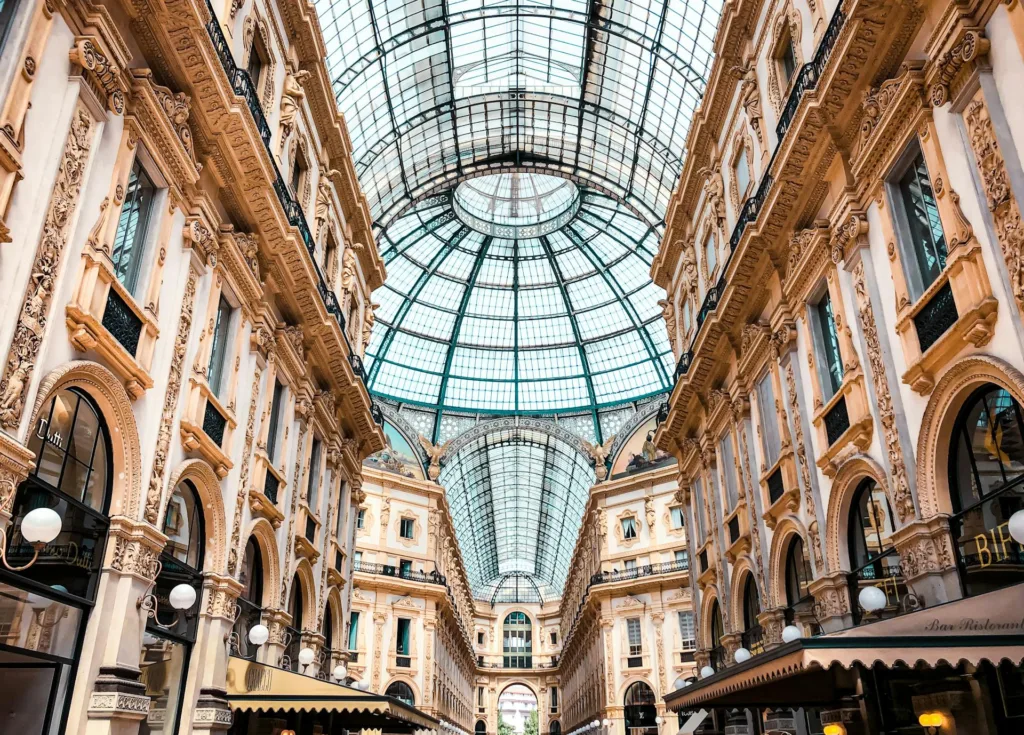
Photo by Tove Liu
1. How can I travel to Milan on a budget?
Here’s how to plan an affordable trip to Milan:
- Flights: Use budget airlines like Ryanair, EasyJet, and Wizz Air, which frequently offer fares as low as €20–€50 round trip from major European cities. Set flight alerts on Skyscanner or Google Flights and choose mid-week departures for cheaper rates.
- Accommodation: Stay in budget-friendly neighborhoods like Navigli, Lambrate, or Città Studi, where hostels and Airbnbs are affordable. Hostels such as Ostello Bello Grande offer dorms starting from €30 per night, while private Airbnb rooms cost €40–€60 per night.
- Food: Save money by eating cheap eats like panzerotti from Luini (€3–€5) or grabbing snacks from markets like Mercato Centrale. Opt for aperitivo deals, where you get a drink and buffet food for €10–€15 (this can replace a full dinner).
- Transportation: Milan’s public transport is affordable and efficient. Use a 24-hour pass (€7) or 72-hour pass (€12) for unlimited metro, tram, and bus rides. Walk around central areas like the Duomo and Navigli Canals to save on transport.
- Free Activities: Visit free attractions like Piazza del Duomo, Parco Sempione, and the Navigli Canals. Plan for free museum entry days, like the first Sunday of the month.
2. Is Milan expensive for budget travelers?
Milan has a reputation for luxury, but it can be budget-friendly for savvy travelers:
- Accommodation: Budget hostels start from €25–€35 per night, Airbnbs range from €40–€60, and cheaper hotels are available for €70–€80 per night.
- Food: You can eat well for €20–€30 per day by sticking to street food, cheap trattorias, or aperitivo buffets.
- Breakfast (espresso + pastry): €3–€4.
- Lunch (panini or pizza al taglio): €5–€10.
- Dinner (aperitivo): €10–€15.
- Transport: A 24-hour pass (€7) covers unlimited metro, tram, and bus rides, helping you avoid taxis. Milan is also very walkable in its central areas.
Conclusion: Daily expenses can range from €50 to €75 if you manage transportation and meals thoughtfully, making it affordable for budget travelers.
3. How much money should I budget for a week in Milan?
Here’s a breakdown of what a 7-day trip to Milan might cost on a budget:
| Category | Estimated Cost |
| Accommodation | €25–€50 per night (€175–€350 total) |
| Food & Drinks | €20–€30 per day (€140–€210 total) |
| Transport | €7/day or €17.50 for a 7-day pass |
| Attractions | €5–€15/day for optional tickets (€50 total) |
| Miscellaneous | Souvenirs or snacks (€20–€30) |
Total Weekly Cost Estimate: €450–€650, depending on your travel activities and choices.
Tips to Save More:
- Stay in budget hostels or longer-term Airbnb rentals (discounts apply for 5+ days).
- Utilize free attractions like parks and piazzas.
- Cook meals using groceries when staying in Airbnbs.
4. What is the cheapest time of year to visit Milan?
The cheapest time to visit Milan is during January and February, right after the holiday season. Here’s why:
- Flights: Airfares are the lowest during Milan’s off-peak season, with round-trip flights from Europe costing as little as €20–€50.
- Accommodation: Hostels and Airbnbs lower their prices to attract travelers, with dorms starting at €20 per night.
- Attractions: Fewer tourists mean shorter lines and easier access to landmarks like the Duomo and Sforza Castle. Museums also remain open, often with free days (first Sunday of the month).
Other budget-friendly periods include April–May and September–November (shoulder seasons), which offer cheaper stays and good weather.
5. What are the cheapest airlines flying into Milan?
The most affordable airlines flying into Milan primarily land in Bergamo (BGY) or Malpensa (MXP), making the city accessible on a budget. Here are your top options:
- Ryanair:
Specializes in ultra-cheap European flights. Routes to Bergamo frequently start from €10–€30 one way.- Example Routes: London, Berlin, Barcelona, Budapest.
- EasyJet:
Operates in both Malpensa and Linate, offering low-cost tickets for €30–€50 one way. Great for short-haul destinations. - Wizz Air:
Ideal for flights from Eastern Europe to Bergamo, often priced at €15–€40.
Pro Tips for Cheap Flights:
- Book flights 2–3 months in advance for the best deals.
- Use comparison tools like Skyscanner, Kayak, or Google Flights.
- Fly mid-week (Tuesdays or Wednesdays) for the lowest fares.
6. Where can I stay in Milan for cheap as a solo traveler?
Solo travelers in Milan have plenty of affordable accommodation options, especially in hostels, budget Airbnbs, or low-cost hotels:
- Hostels:
- Ostello Bello Grande: Near Milan Centrale Station, it’s a social hostel that includes free breakfast, dinner, and aperitivo. Dorms cost €30–€50 per night.
- YellowSquare Milan: Located in Porta Romana, ideal for digital nomads, with dorm beds starting at €30–€40/night.
- Combo Milano: Situated in the vibrant Navigli Canals area. Dorms cost around €35–€50/night, offering a peaceful vibe even in a social setting.
- Airbnbs:
- Private rooms in shared apartments start at €40–€60 per night. Look for options in neighborhoods like Lambrate or Porta Romana for affordability and convenience.
- Neighborhood Focus: Stay in budget-friendly areas like Città Studi, Lambrate, or Navigli Canals to save money while still being close to public transport.
Pro Tip: Book your stays 2–4 months in advance (especially during peak events like Fashion Week) to lock in better prices.
7. What are the best budget hostels in Milan?
Here are Milan’s top-rated hostels that are both affordable and solo-traveler-friendly:
- Ostello Bello Grande
- Location: Near Milan Centrale Station.
- Cost: €30–€50 per night (dorm).
- Why It’s Great: Free breakfast, free dinner, and a lively social scene. Events like karaoke and aperitivo make it ideal for meeting other travelers.
- YellowSquare Milan
- Location: Porta Romana.
- Cost: €30–€40 per night (dorm).
- Why It’s Great: Modern, stylish design and great for digital nomads—co-working areas included.
- Madama Hostel & Bistrot
- Location: Porta Romana area.
- Cost: €30–€45 per night (dorm).
- Why It’s Great: Quieter and smaller with a fantastic bistro for budget meals.
- Combo Milano
- Location: Navigli district.
- Cost: €35–€50 per night.
- Why It’s Great: An upscale hostel with chic interiors, great for travelers looking for a boutique feel while on a hostel budget.
Pro Tip: Book hostels directly on their websites to avoid third-party fees while also securing perks like free welcome drinks or discounts.
8. Which districts in Milan offer the cheapest accommodations?
For cheap stays in Milan, look for hostels, Airbnbs, or hotels in these districts:
- Navigli Canals:
- A buzzing nightlife hotspot with affordable hostels like Combo Milano, offering dorm beds for €30–€50/night.
- Budget Airbnbs cost €40–€60/night.
- Città Studi:
- A student district with numerous budget accommodations, including hostels and affordable room rentals.
- Prices: Hostel dorms start at €25–€35, and Airbnbs from €40/night.
- Lambrate:
- A residential, quiet area just outside the city center, offering affordable Airbnbs.
- Prices: Rooms for €30–€50/night, and small apartments for €50–€70/night.
- Porta Romana:
- Charming streets and less crowded, with hostels and budget hotels. Great transport connectivity.
- Prices: Dorms cost €30–€45, while Airbnbs start from €50/night.
- Bovisa or Bicocca:
- Farther from the central tourist areas, but hostels and Airbnbs are cheaper (and easily accessible via metro).
- Prices: Hostel dorms start at €20–€30.
9. What are the best cheap places to eat in Milan for under €10?
Milan has plenty of budget-friendly eateries known for authentic, delicious food without breaking the bank. Here are some recommendations:
- Luini Panzerotti
- Famous for panzerotti (fried dough pockets with mozzarella and tomato). A Milan classic located near the Duomo.
- Cost: €3–€5 per panzerotto.
- Pizzium
- Serves Neapolitan-style pizzas with high-quality ingredients.
- Cost: Personal pizzas start at €8–€10.
- Spontini
- Known for its thick-crust pizza slices with gooey cheese and tomato goodness.
- Cost: €3–€5 per slice.
- Mercato Centrale (Central Market)
- Located in Milan Centrale Station, it’s filled with multiple food stalls offering pizza, pasta, and paninis.
- Cost: Meals range from €5–€10.
- Tramè
- Specializes in Venetian-style sandwiches made with fluffy focaccia.
- Cost: €4–€7 per sandwich.
Pro Tip: Look for street food locations or grab meals on the go to stick to a €10 food budget easily.
10. How can I save money on food while traveling in Milan?
Use these tips to save big on food while still enjoying great Italian cuisine:
- Aperitivo Culture:
- Order a drink (€8–€15) and enjoy a complimentary buffet of pasta, charcuterie, and small bites.
- Best Spots: Navigli district or La Rinascente rooftop bar.
- Eat Street Food:
- Grab panzerotti from Luini or pizza slices from Spontini (€3–€5) instead of sit-down meals.
- Avoid Tourist Traps:
- Restaurants near Piazza del Duomo often inflate prices. Walk a few blocks away to find cheaper and more authentic spots.
- Visit Supermarkets:
- Budget supermarkets like Lidl or Esselunga sell fresh sandwiches, salads, and pasta dishes for under €5. Great if you’re staying in an Airbnb or hostel with a kitchen.
- Breakfast Tips:
- Go Local: Italians typically have an espresso and croissant for €2–€4, standing at the bar (al banco) instead of sitting.
- Pro Tip: Look for trattorias offering a Menu del Giorno (Daily Menu) during lunch hours for €10–€15, including a main dish, side, and drink.
11. Is aperitivo in Milan worth it for budget dining?
Absolutely, yes! Aperitivo in Milan is one of the best budget-friendly dining hacks, giving you a drink and enough food to replace dinner if you time it right.
- How It Works: You pay for a drink (Aperol Spritz, Negroni, wine, etc.)—usually €8–€15—and get access to a buffet of small bites, including pasta dishes, salads, charcuterie, breads, and more.
- Best Time: Aperitivo typically starts around 6 PM and goes until 8:30 PM. Arrive early to get the best food options!
Where to Go for Aperitivo Deals in Milan:
- Navigli Canals: Many bars along the canals offer great aperitivo deals. Try Spritz Navigli (€9) for great food and a lively atmosphere.
- Terrazza Aperol (Duomo): A bit pricier (€15), but incredible views of the Duomo make it worth it.
- Frida Milano (Isola): A laid-back spot offering drinks and a generous buffet for €10–€12.
Pro Tip: Fill up on the buffet and skip a sit-down dinner to save €20–€30 for the night!
12. Do restaurants in Milan charge extra to sit down (coperto)?
Yes, most restaurants in Milan—and throughout Italy—charge an extra fee called coperto, which is basically a seating and table service fee. Here’s what you need to know:
- How Much Is Coperto?
- Typically ranges from €1–€5 per person—you’ll see it listed at the bottom of the menu in fine print.
- Trendier restaurants or those near tourist landmarks usually charge closer to €3–€5, while smaller trattorias charge less.
- When It’s Avoided:
- If you order food to-go or eat at the bar (al banco), you typically avoid coperto.
Pro Tip: Always check the menu for “Coperto” to avoid surprises, and opt for budget-friendly spots like local trattorias or food markets that don’t charge it.
13. What are the free attractions I can visit in Milan?
Milan offers plenty of free landmarks and activities that allow you to experience the city’s beauty without spending a dime. Add these to your itinerary:
- Duomo (Piazza and Exterior): Admire Milan’s iconic Gothic cathedral from Piazza del Duomo, and walk around for incredible photos (free entry to the Duomo exterior).
- Navigli Canals: The scenic canal district is perfect for an evening stroll, street art spotting, or people-watching.
- Parco Sempione and Arco della Pace: Milan’s largest park is free to enter and ideal for relaxing or walking. Stop by the Arch of Peace, located at the park’s edge.
- Galleria Vittorio Emanuele II: This elegant shopping arcade is a masterpiece of architecture—and entirely free to explore!
- Basilica di Sant’Ambrogio: One of Milan’s oldest churches, known for its Romanesque architecture and serene atmosphere.
- Cimitero Monumentale (Monumental Cemetery): A hidden gem with stunning sculptures and mausoleums—it feels like walking through an open-air museum.
Pro Tip: Spend a day walking between free sights in central Milan to save on transport and entry fees.
14. Is it possible to see The Last Supper in Milan on a budget?
Yes, you can see The Last Supper (Cenacolo Vinciano) on a budget, but it requires advanced planning. Here’s how:
- Entry Fee: Tickets to see Leonardo da Vinci’s masterpiece cost €15 (including the reservation fee).
- Booking Tips:
- Tickets sell out fast, often months in advance. Book directly on the official website for lowest prices: cenacolo.vivaticket.it.
- Avoid third-party resellers who charge significantly more.
- Free Entry Option:
- Entrance is free on the first Sunday of every month, but reservations are still required (and even harder to secure).
- Cheaper Alternatives:
- While waiting for your ticket time, visit the adjacent Santa Maria delle Grazie Church for free. It’s part of the same complex that houses The Last Supper.
Pro Tip: If tickets are fully booked, consider guided tours (~€30+) that include entry to The Last Supper as part of the package.
15. Are free museum days available in Milan? If yes, when?
Yes, Milan offers free museum days, allowing visitors to enjoy the city’s art and history without paying admission fees.
- First Sunday of the Month (Domenica al Museo):
- Many museums and cultural landmarks waive entry fees on the first Sunday of every month. In Milan, this includes:
- Sforza Castle Museums (Castello Sforzesco).
- Museo del Novecento (Modern Art Museum).
- Archaeological Museum of Milan.
- Many museums and cultural landmarks waive entry fees on the first Sunday of every month. In Milan, this includes:
- Seasonal Special Events:
- During Settimana dei Musei (Museum Week) in spring, entry to museums is free every day for a full week! Check local calendars for specific dates.
- Free Churches and Cathedrals:
- Some of Milan’s basilicas and churches, like Basilica di San Lorenzo Maggiore and Sant’Ambrogio, are always free to visit.
Pro Tip: Arrive early on free days to avoid long lines, especially at museums like Sforza Castle.
16. What is the cheapest way to get from Milan Malpensa Airport to the city center?
There are several affordable options to travel from Malpensa Airport (MXP) to Milan’s city center:
- Malpensa Shuttle Bus
- Cost: €10 one way or €16 round trip.
- Travel Time: 50–60 minutes to Milan Centrale Station.
- Why It’s Affordable: Direct and frequent buses every 20 minutes, making it hassle-free for solo travelers.
- Pro Tip: Pre-book online for small discounts or flexibility.
- Malpensa Express Train
- Cost: €13 one way.
- Travel Time: ~50 minutes to Milan Centrale, Cadorna, or Porta Garibaldi Station.
- Why It’s Worth It: Comfort, speed, and direct access to key metro hubs. Ideal if you’re traveling light.
- Cheapest Option (Regional Bus 73 + S Train)
- Combine an airport bus to Gallarate station with a Trenord S train to Milan Centrale.
- Cost: €5–€7, but slightly slower (~70–90 minutes).
- Pro Tip: Perfect for extreme budget travelers willing to sacrifice convenience for savings.
Avoid Taxis: Fares from Malpensa to the city center range from €80–€100, making them an expensive option.
17. Can I visit Lake Como from Milan on a budget?
Absolutely! Lake Como is one of the most affordable and popular day trips from Milan. Here’s how to do it cheaply:
- Getting There (Budget Transport):
- Take a regional train from Milan Centrale to Como (Como San Giovanni station).
- Cost: €5–€10 one way, with trains departing every 30 minutes. Travel time is about 1 hour.
- Affordable Activities at Lake Como:
- Free Strolls: Walk along Como’s picturesque lakeside promenade or explore charming streets in Varenna or Bellagio.
- Ferry Rides (Cheaper Alternative to Tours): Public ferries connect towns like Varenna, Bellagio, and Menaggio. Tickets cost €4–€10, depending on the route.
- Pack a Picnic: Pick up bread, cheese, and fruit from a local market instead of eating at expensive lakeside restaurants.
- Pro Tip: Visit in the spring or fall to avoid peak summer crowds and enjoy lower ferry and accommodation costs.
18. How far in advance should I book flights to Milan for the lowest prices?
Booking flights far enough in advance can save you a significant amount of money. Here’s a timeline for scoring the best deals:
- Short-Haul Flights (Within Europe):
- Book 1–3 months in advance for budget airlines like Ryanair, EasyJet, or Wizz Air.
- Keep an eye out for seasonal promotions or Black Friday sales, which often offer flights for as low as €15–€30 one way.
- Long-Haul Flights (From the US or Asia):
- Book 3–6 months in advance to get the best prices. Flights from major cities like New York, Boston, or Singapore often drop below $500 round trip if booked early.
- Pro Tips for Booking:
- Use flight comparison tools like Skyscanner or Google Flights to set price alerts.
- Fly mid-week (Tuesdays or Wednesdays) when fares are typically lower.
- Consider flights into Bergamo Airport (BGY) for cheaper options compared to Milan Malpensa (MXP).
19. Which airport in Milan (Malpensa, Bergamo, Linate) is best for budget flights?
If you’re flying on a budget, here’s a comparison of Milan’s three main airports:
- Bergamo-Orio al Serio Airport (BGY):
- Best for Budget Airlines: Hub for Ryanair and Wizz Air, with affordable fares starting at €10–€30 for European routes.
- Location: ~50 km from Milan.
- Transport: Shuttle buses to Milan Centrale cost €5–€10 and take ~1 hour.
- Milan Malpensa Airport (MXP):
- Best for International Flights: Best for long-haul or mid-range carriers like EasyJet, Emirates, or Aer Lingus.
- Location: 50 km from Milan.
- Transport: Malpensa Express train (€13 one-way).
- Milan Linate Airport (LIN):
- Closest to the city center (~7 km).
- Used mostly for domestic flights and short-haul routes with slightly higher fares.
- Transport: Public buses cost just €2, but fewer budget options are available here.
Conclusion:
- For European budget flights: Bergamo (BGY) is the best airport.
- For international travelers: Use Malpensa (MXP) for a broader range of routes.
20. How do I find cheap flights to Milan, Italy?
Finding cheap flights requires good planning and the right tools. Here’s how to maximize your savings:
- Use Flight Comparison Tools:
- Websites like Skyscanner, Google Flights, and Kayak allow you to compare prices across multiple airlines.
- Set Alerts: Turn on notifications for Milan to monitor price drops.
- Be Flexible with Dates:
- Use the “flexible dates” feature to identify the cheapest travel days. Flying mid-week (Tuesday or Wednesday) is often 15–20% cheaper than weekend flights.
- Target Budget Airlines:
- For European flights, check Ryanair, EasyJet, and Wizz Air.
- Book directly on their websites to avoid agency fees.
- Fly into Budget Airports:
- Bergamo (BGY) is typically cheaper for short-haul flights compared to Malpensa or Linate.
- Travel During the Off-Season:
- January, February, and late November often have the lowest fares for Milan.
- Tip: Look for Ryanair or EasyJet’s “flash sales,” which can drop fares as low as €15.











